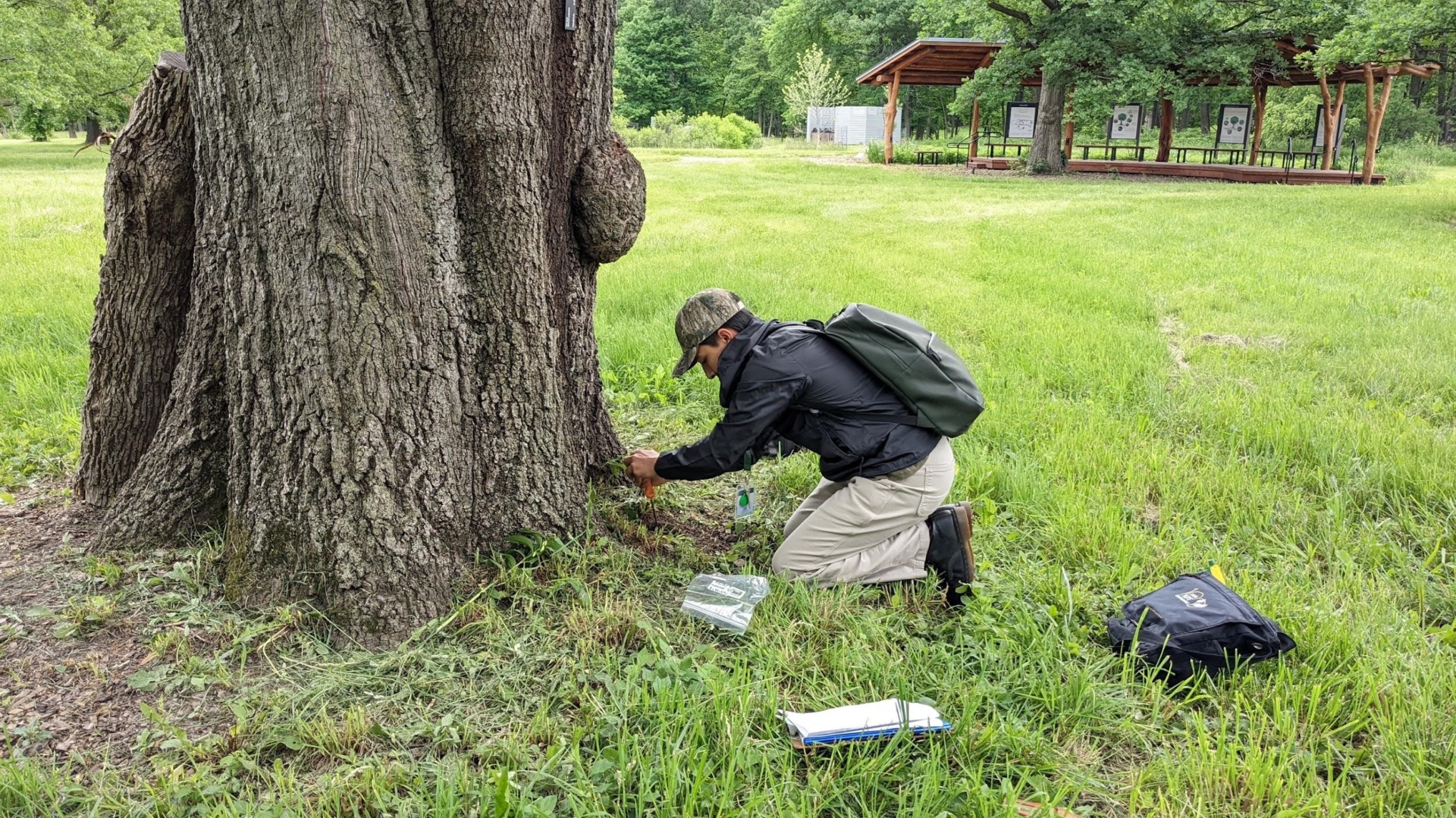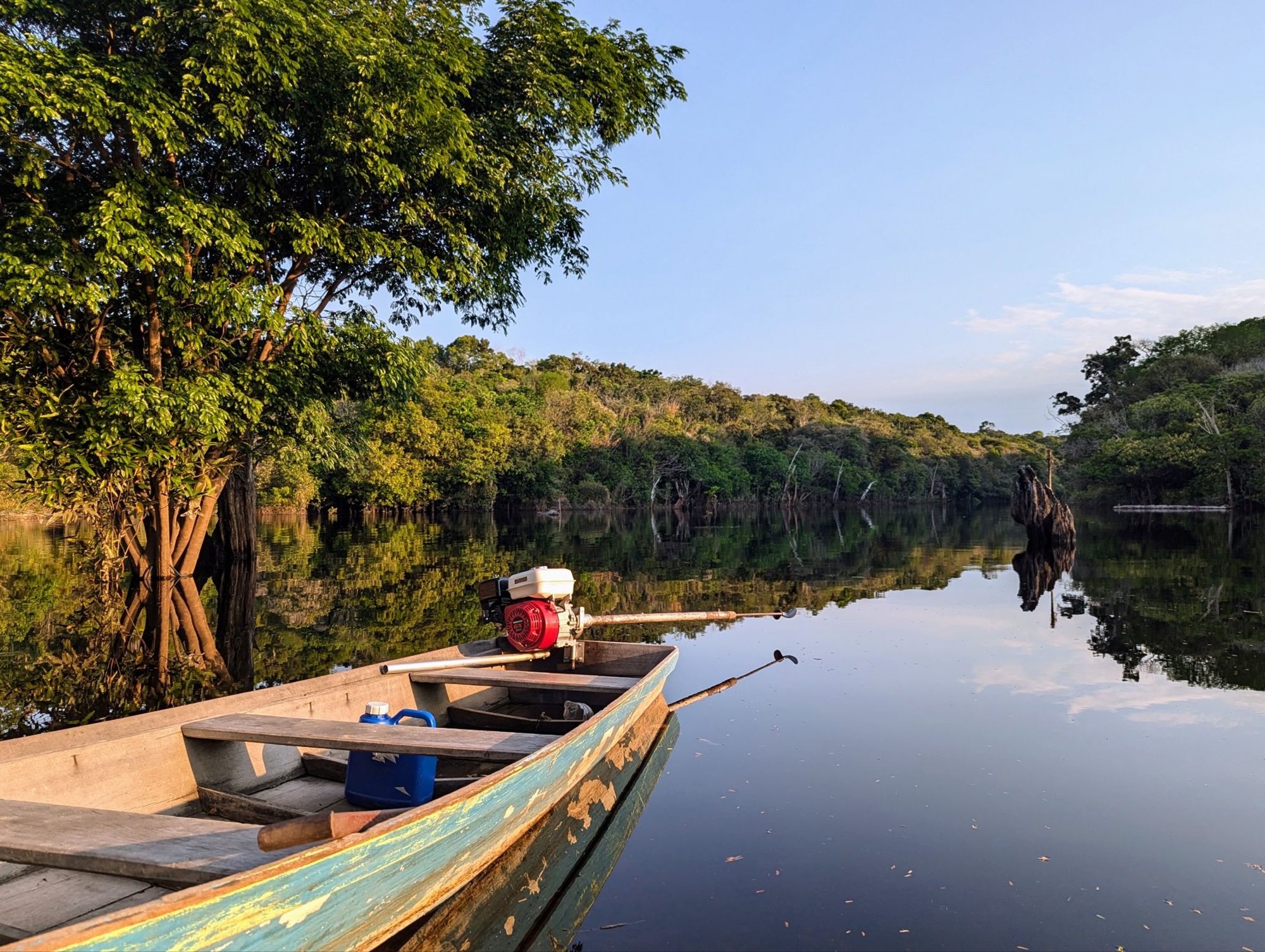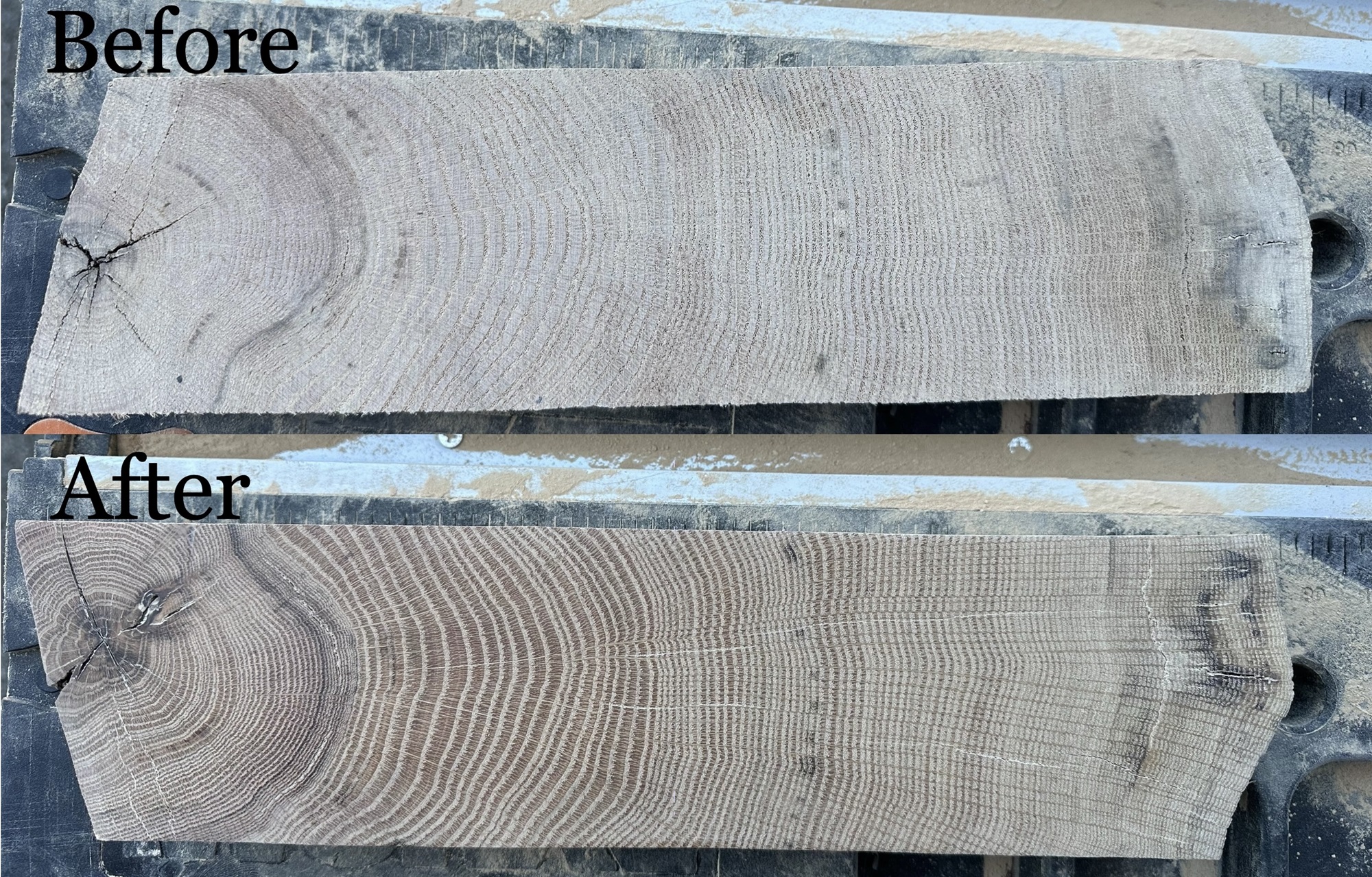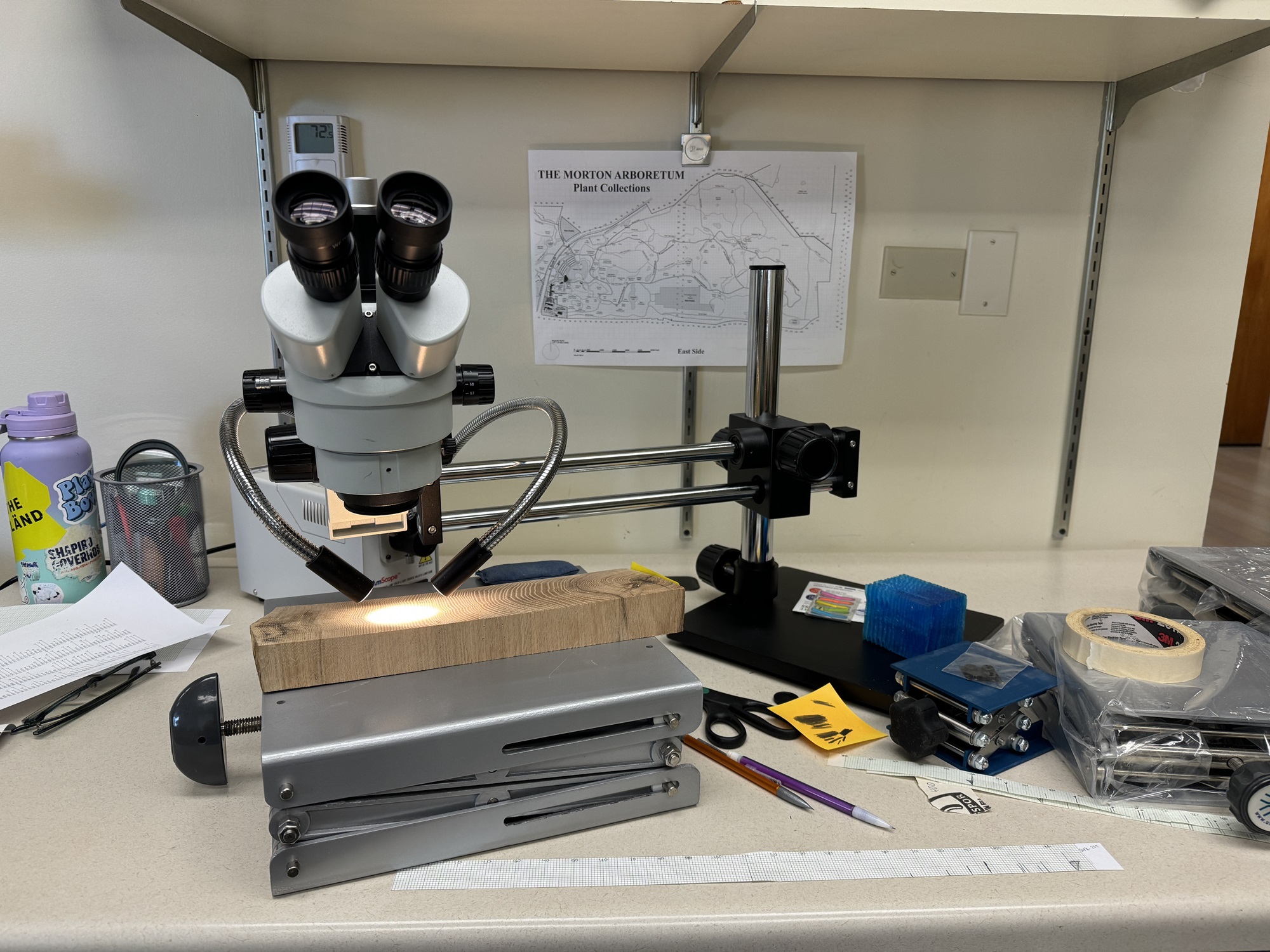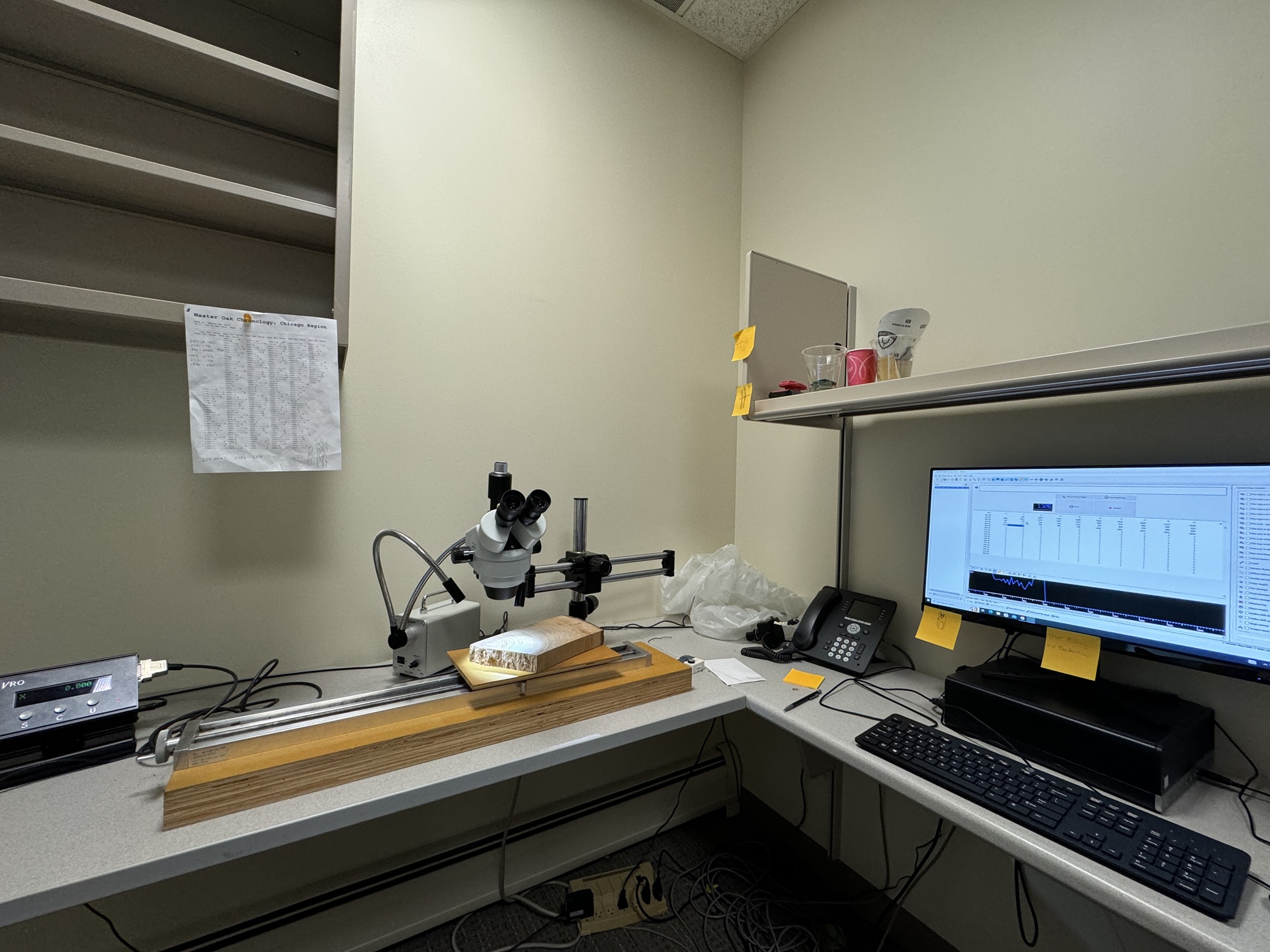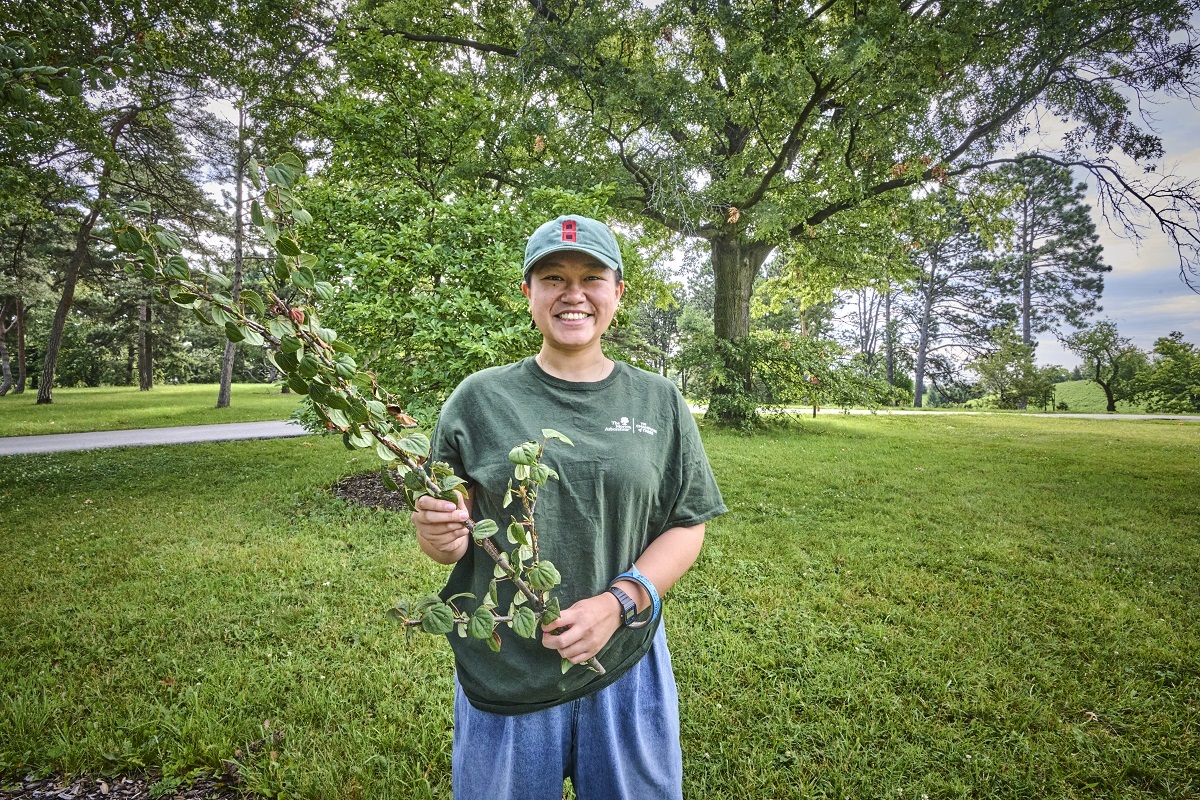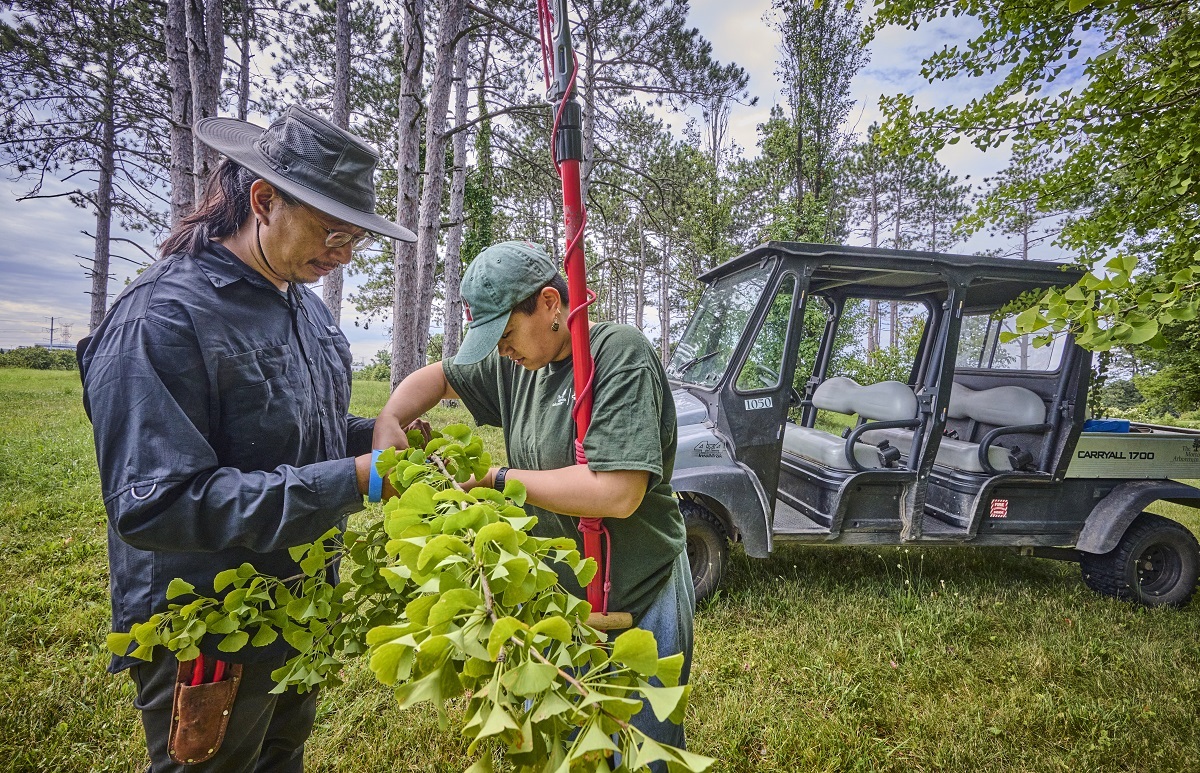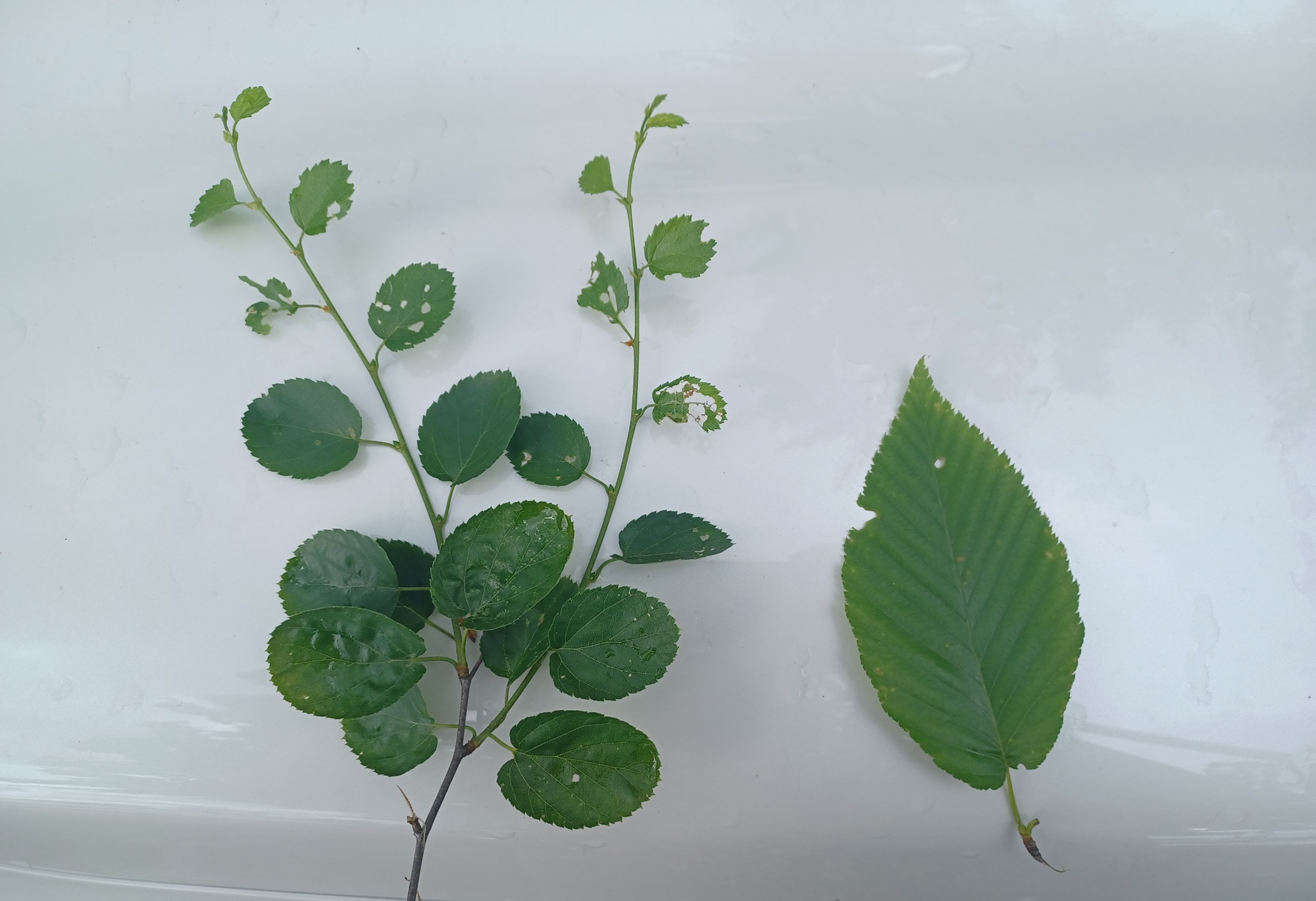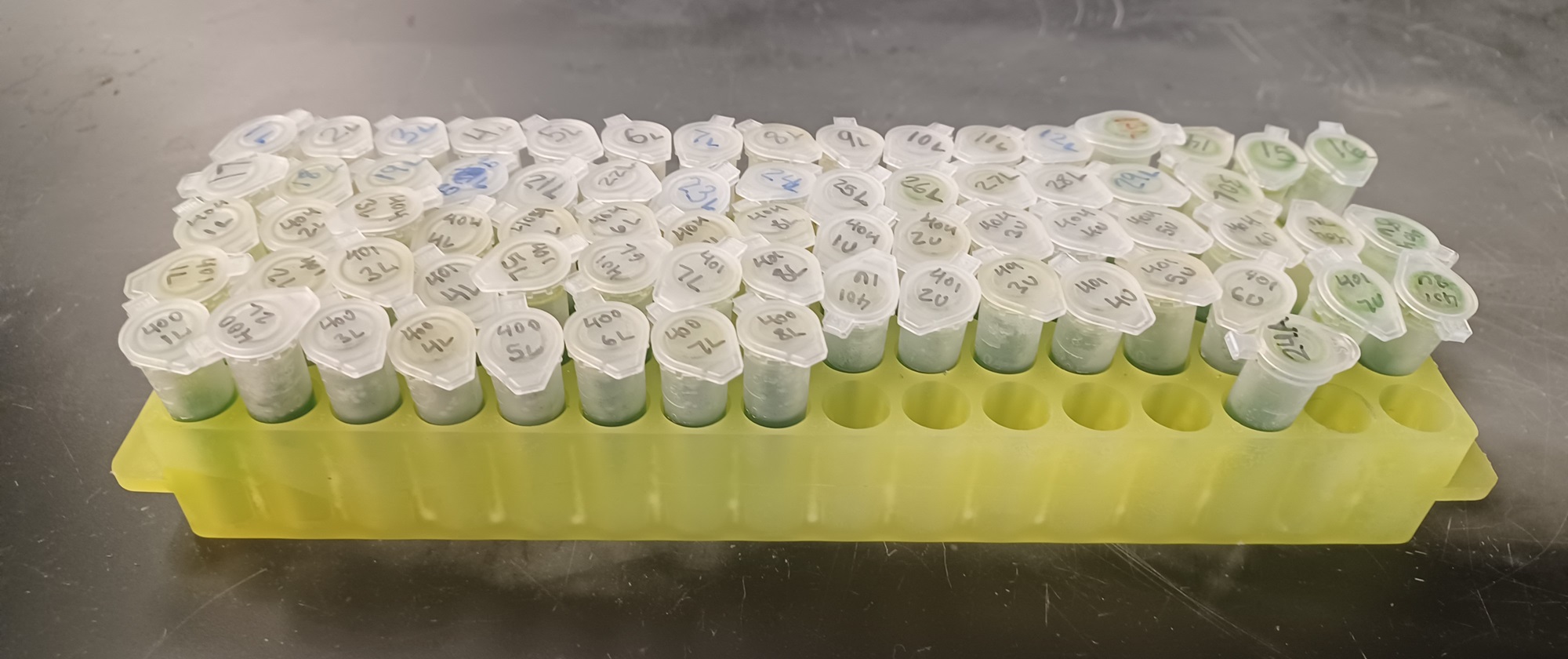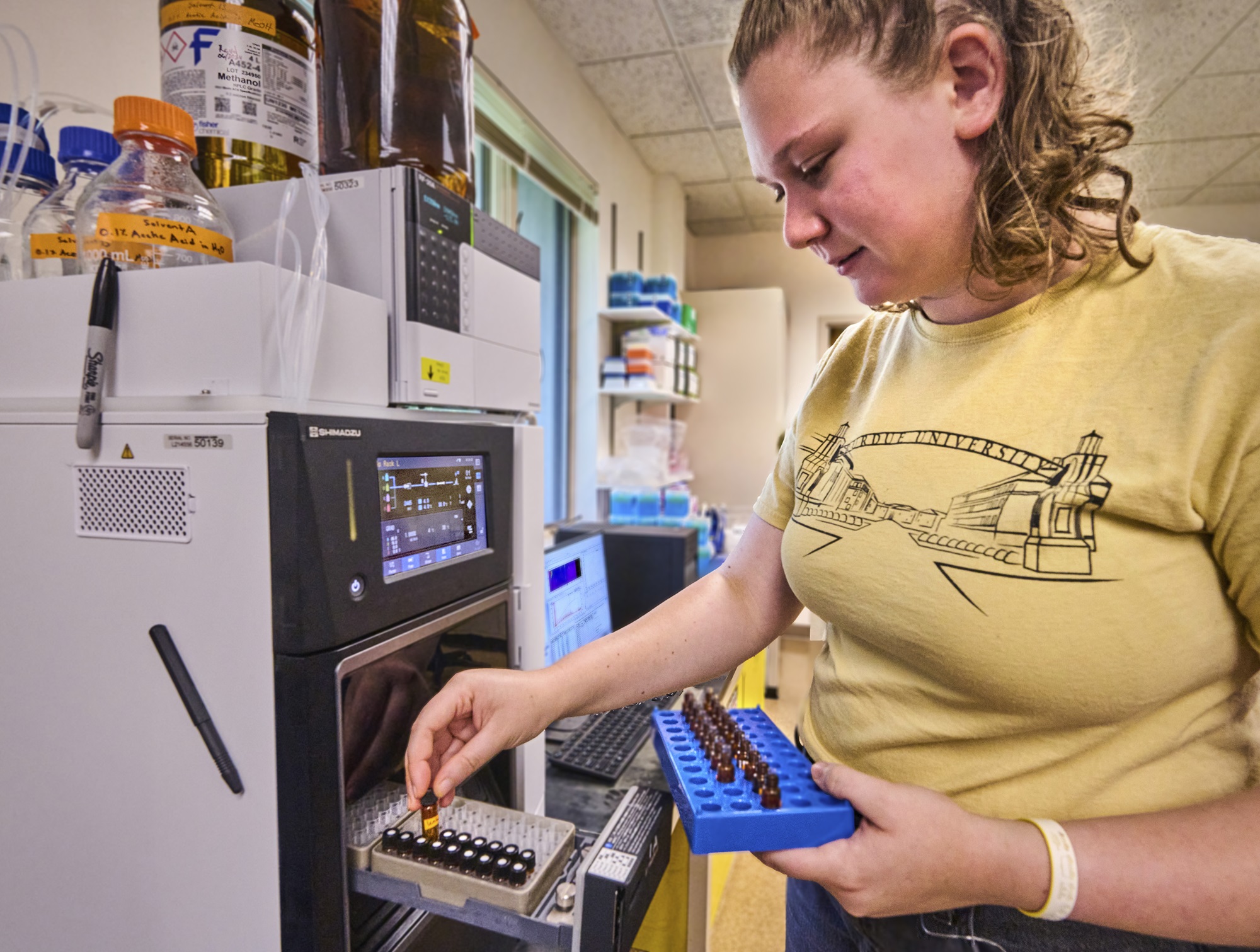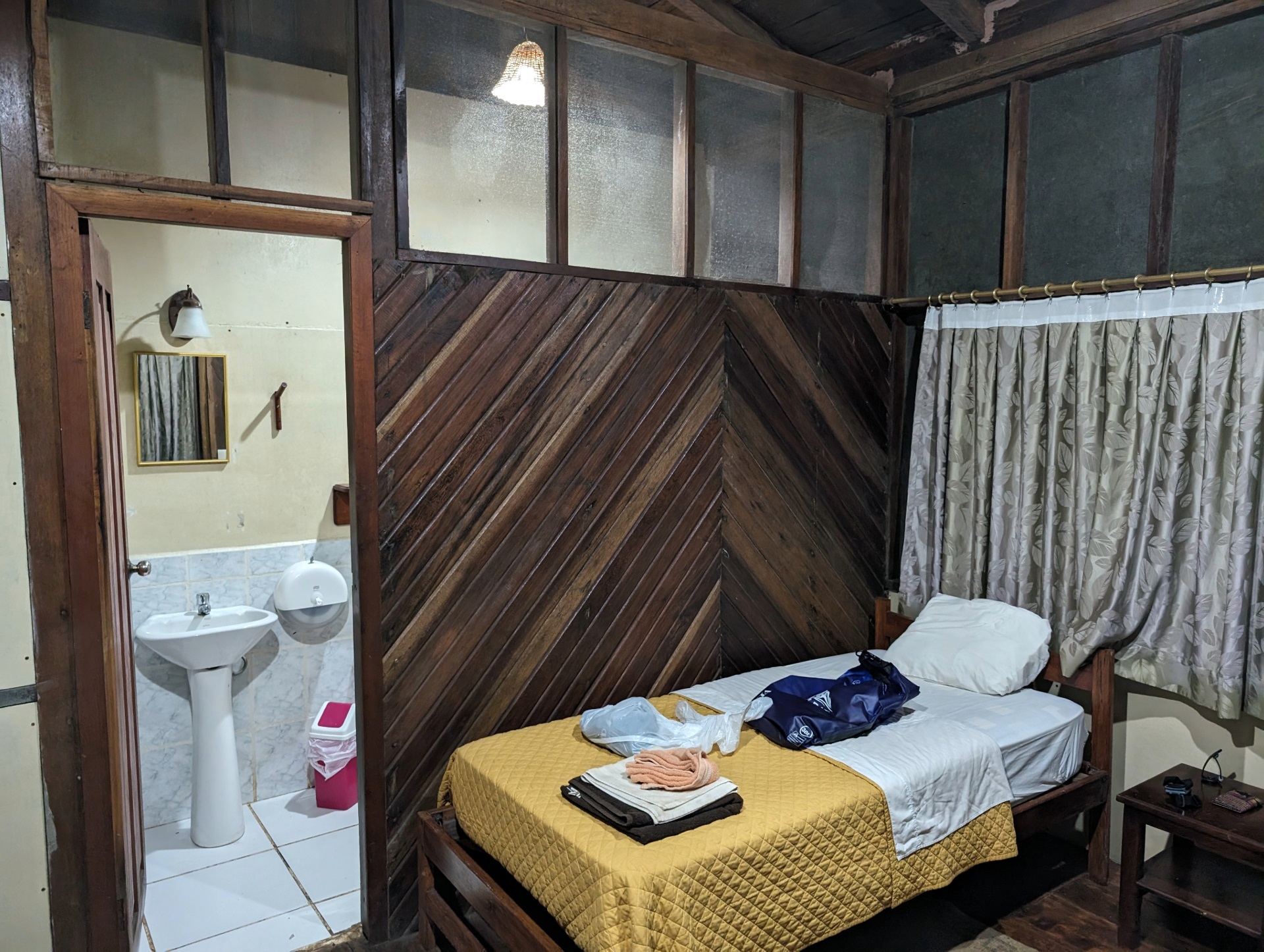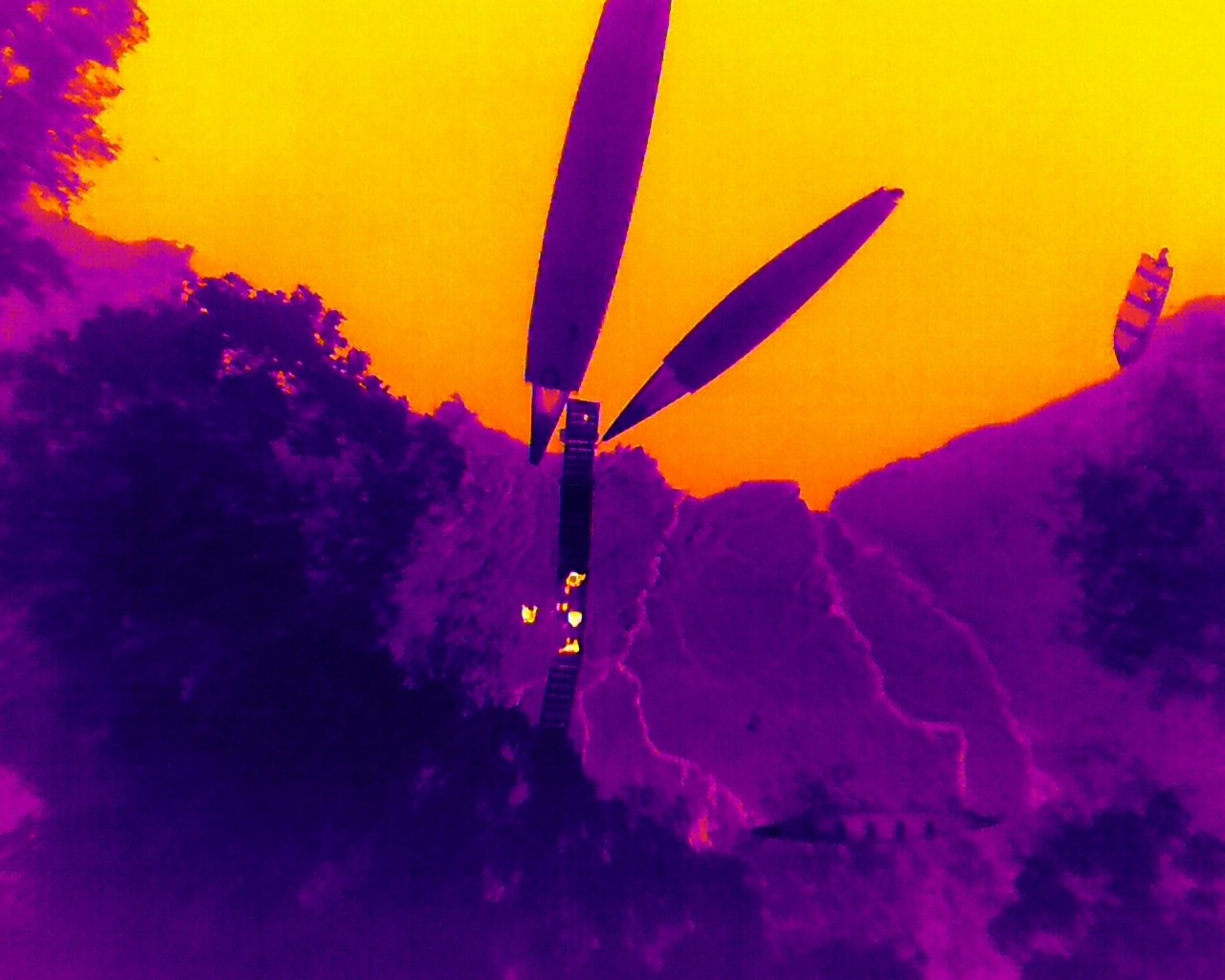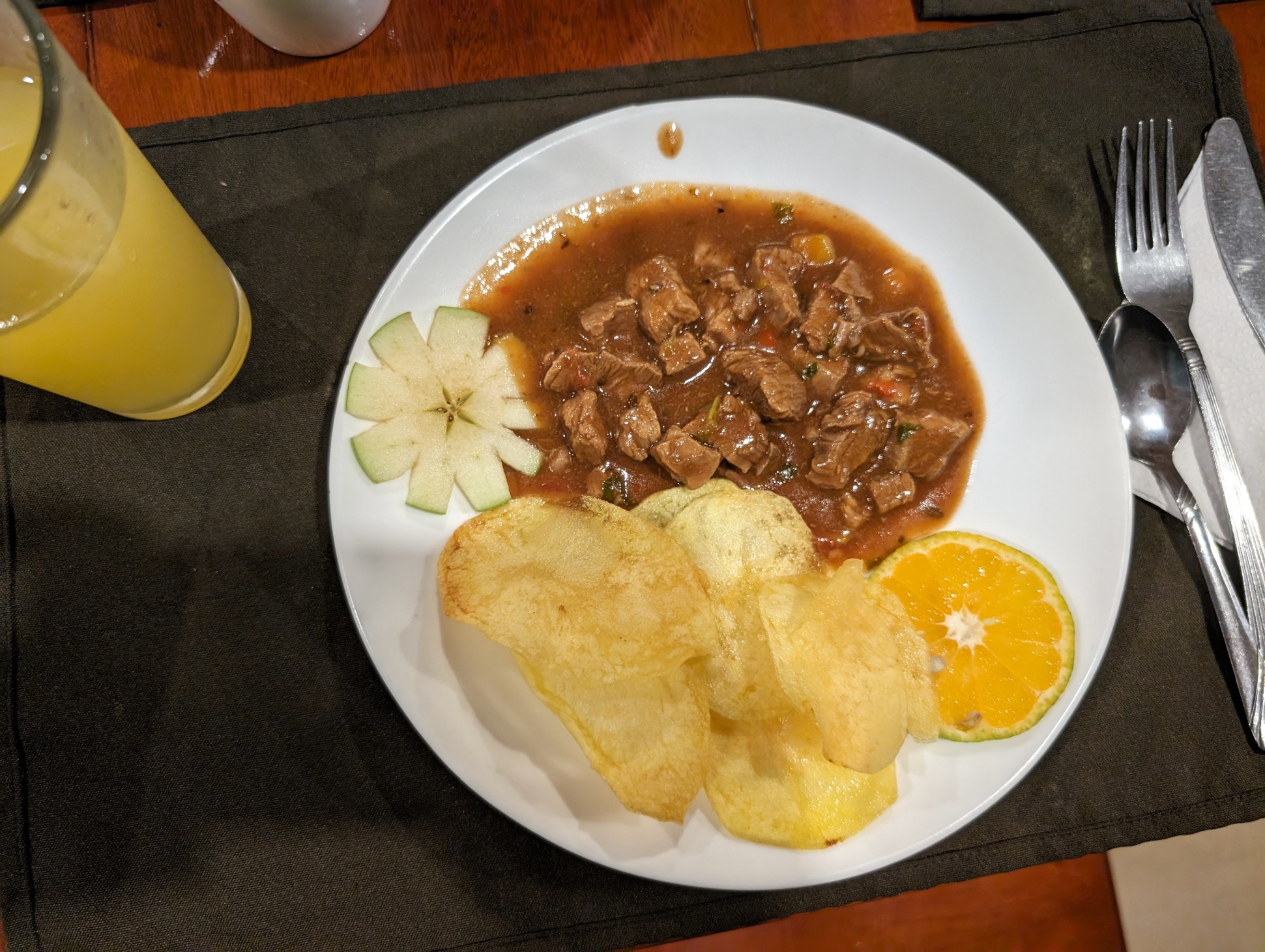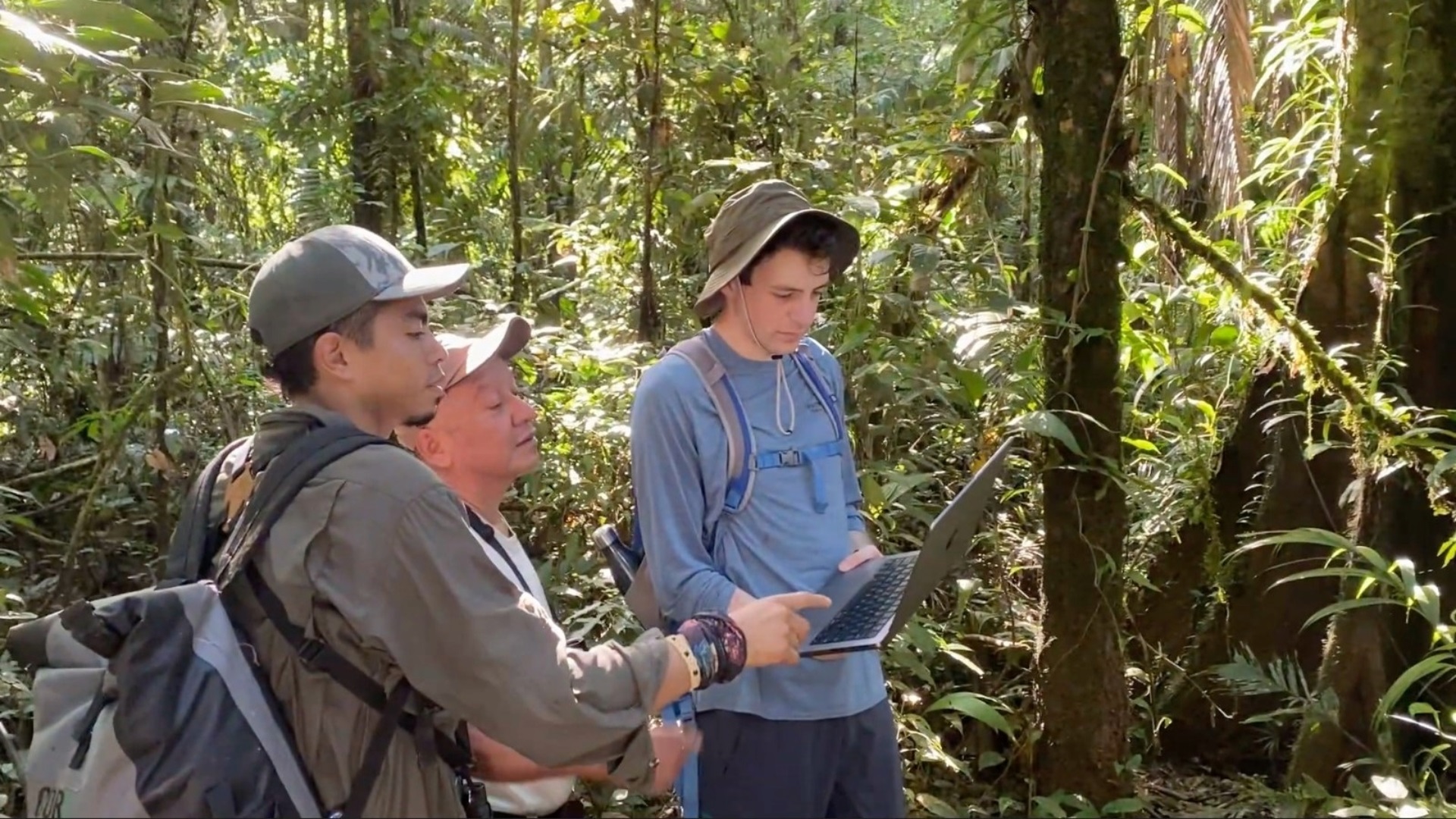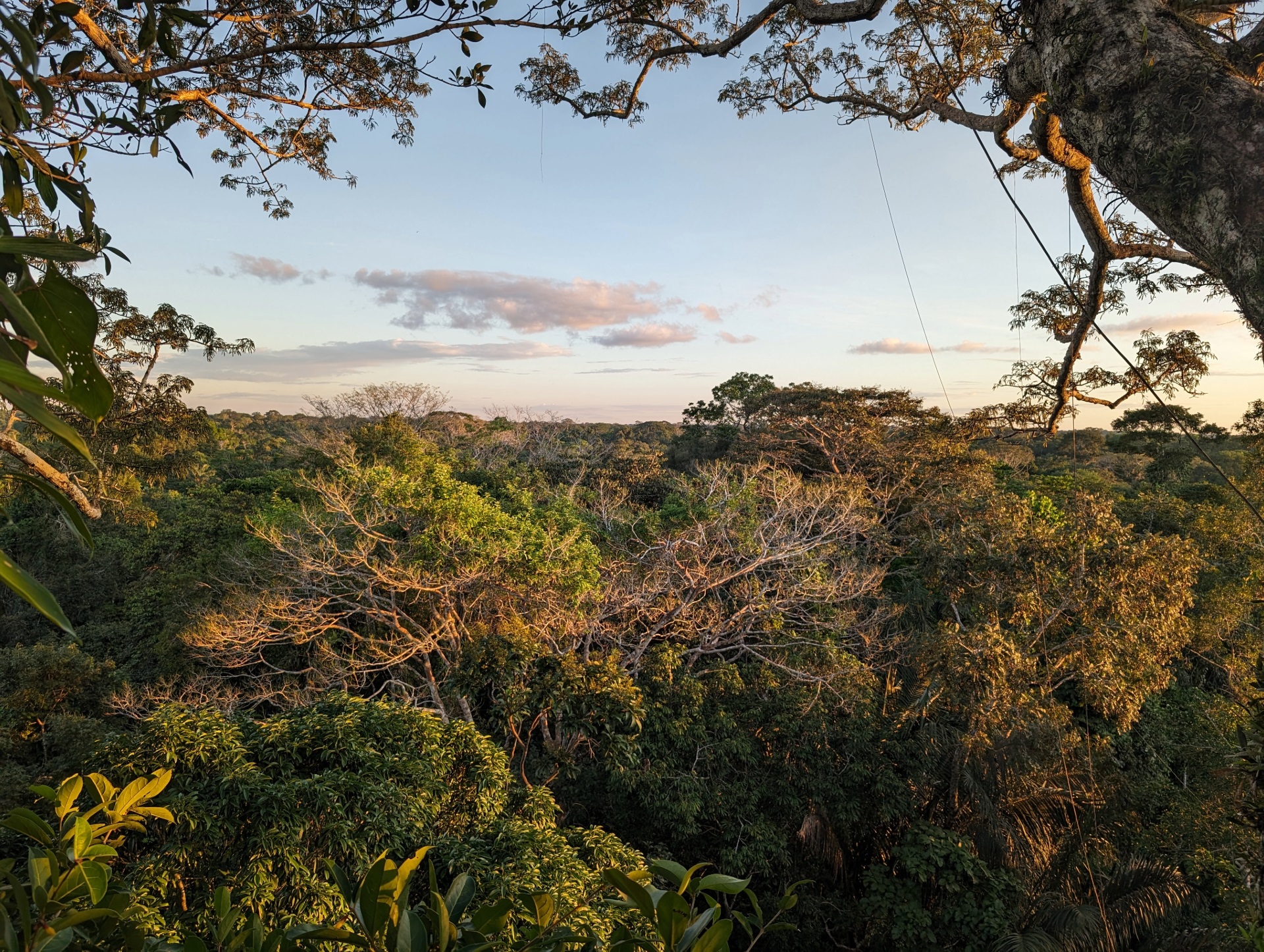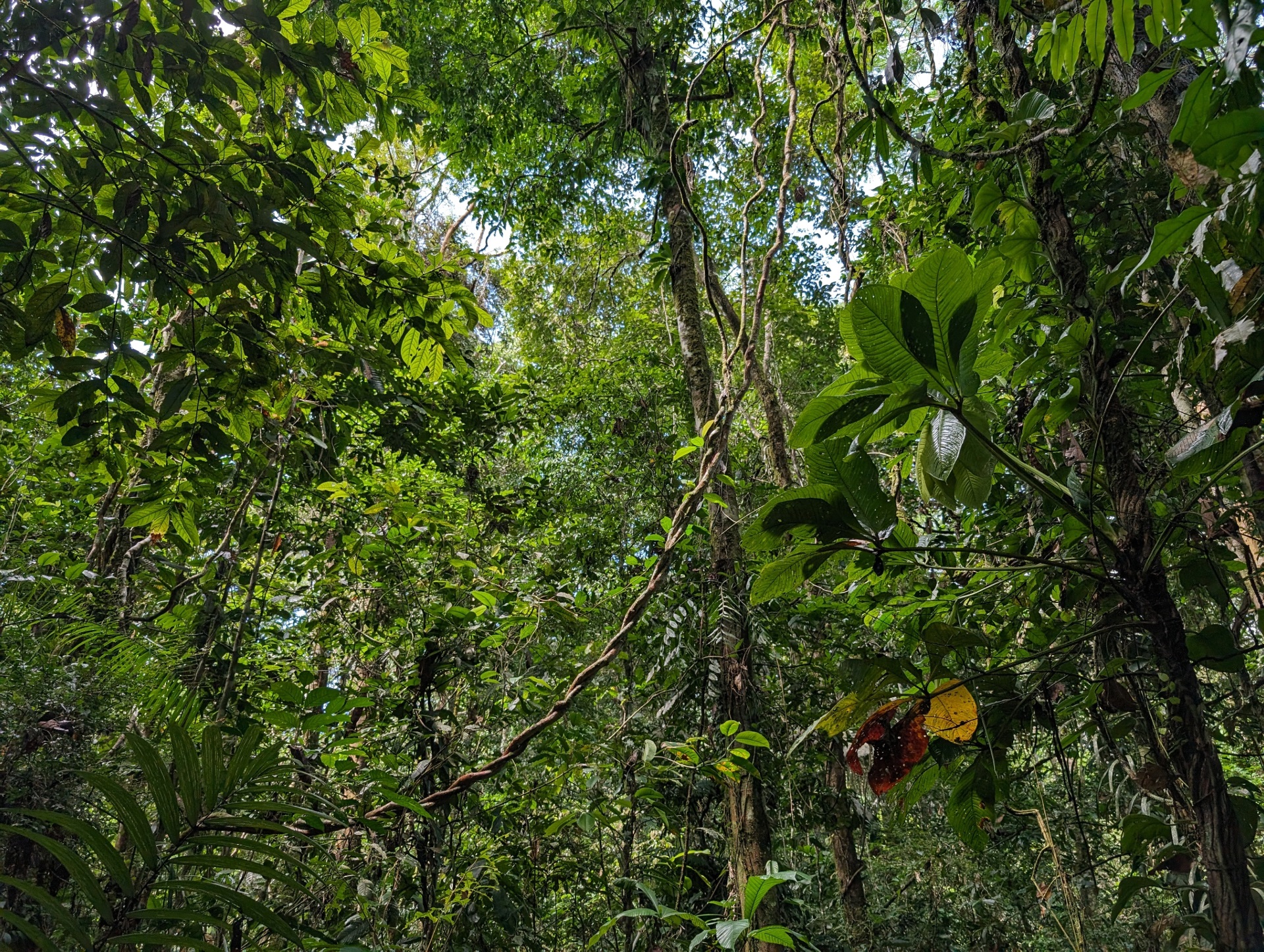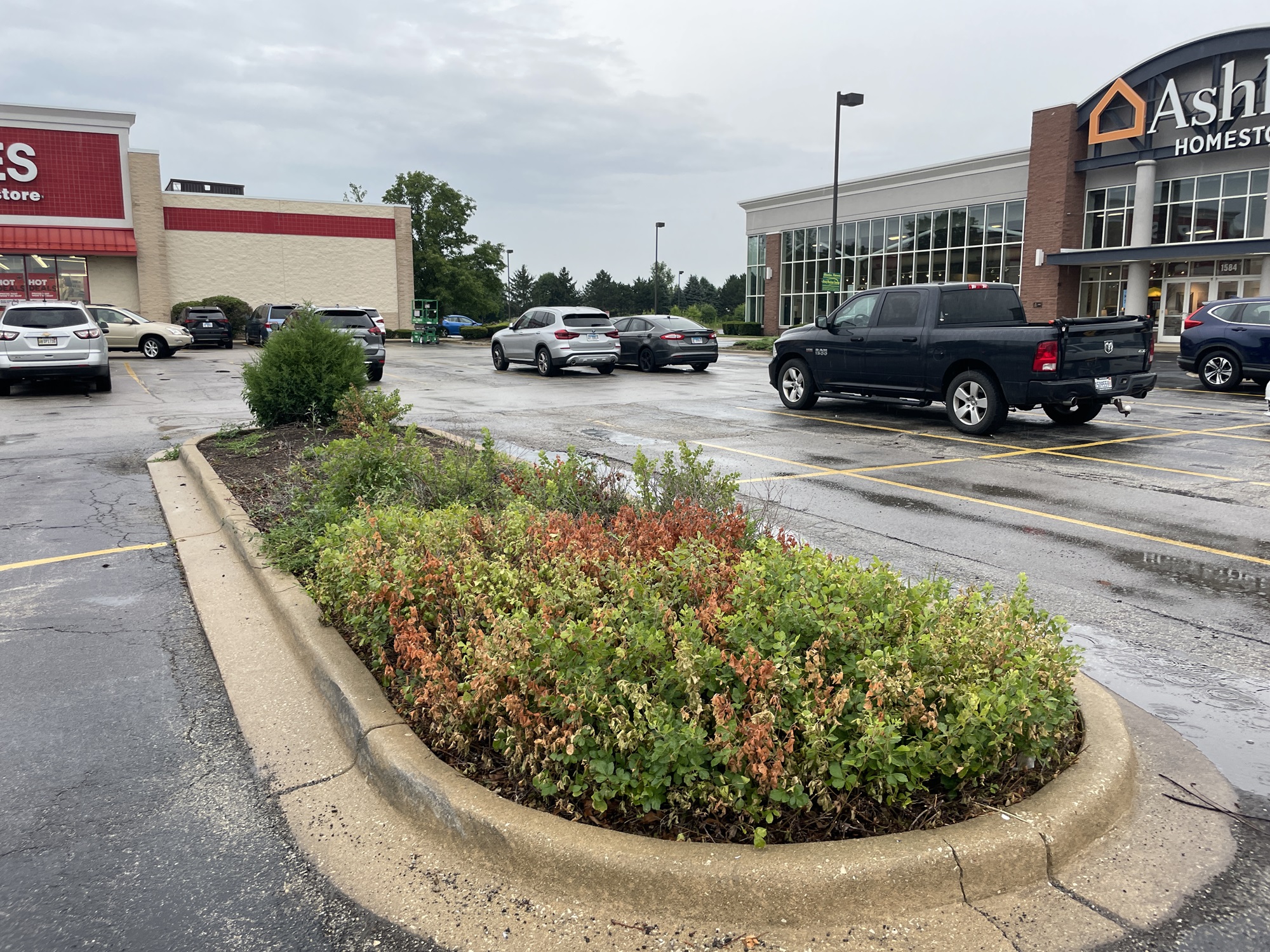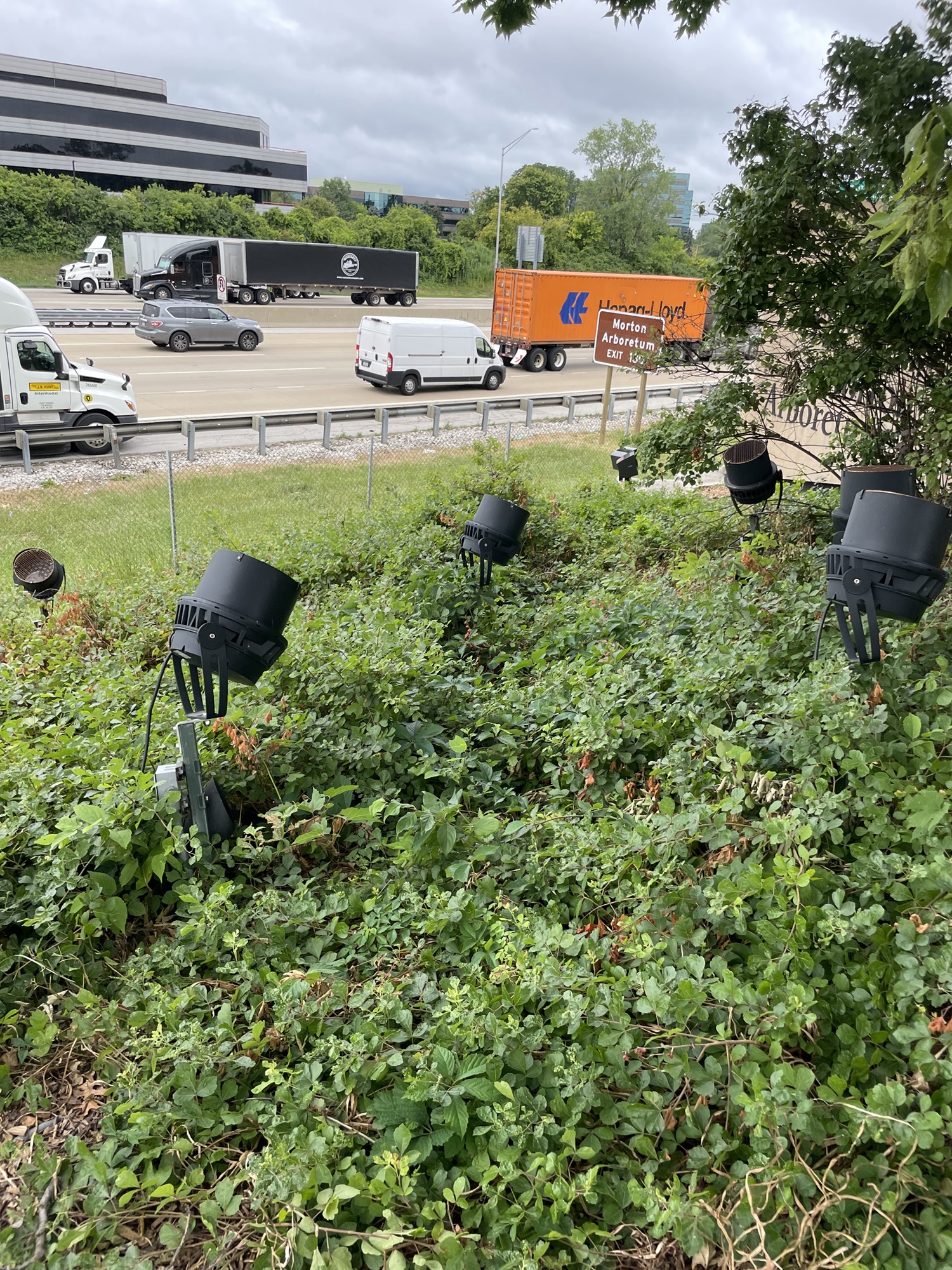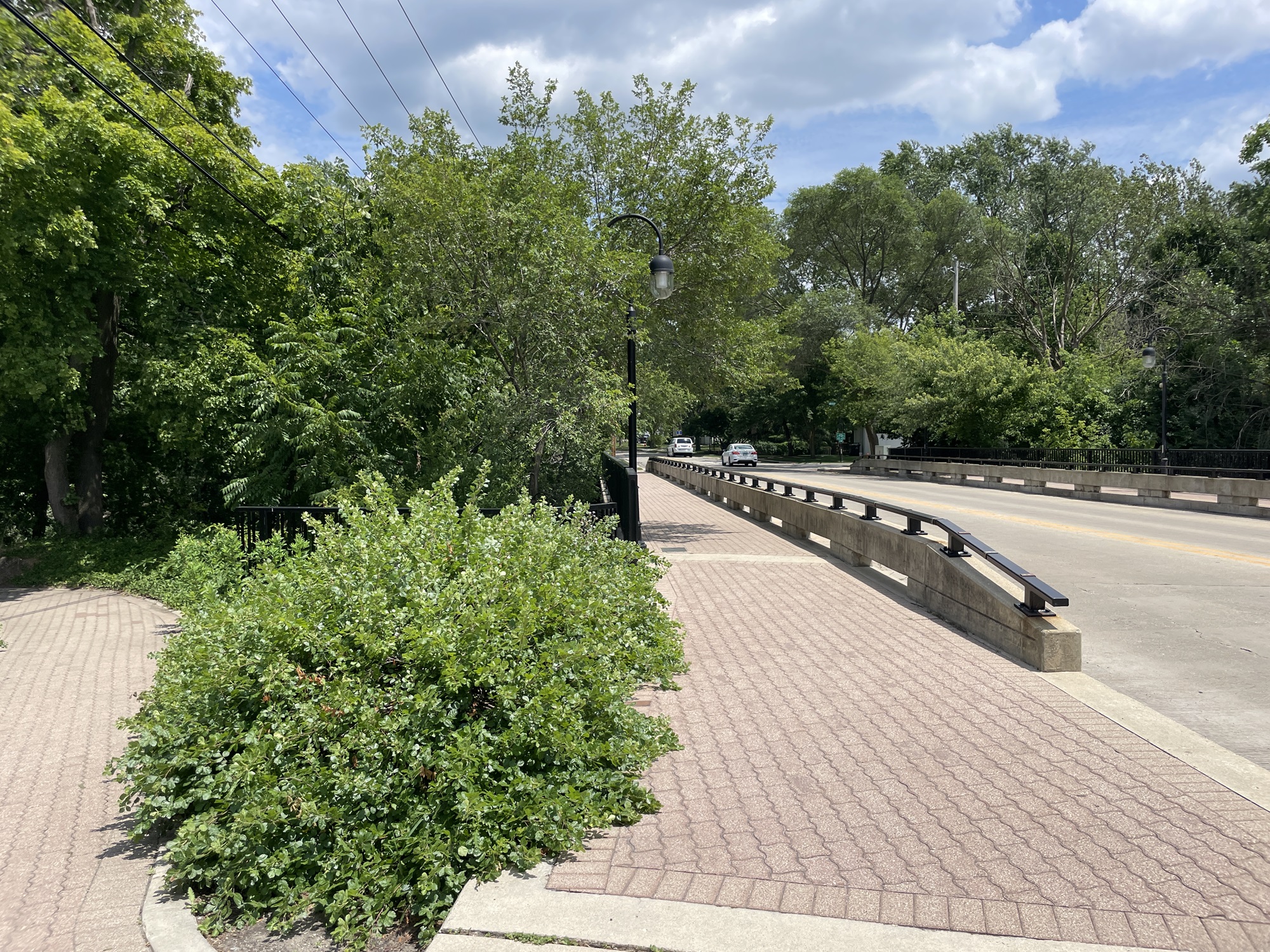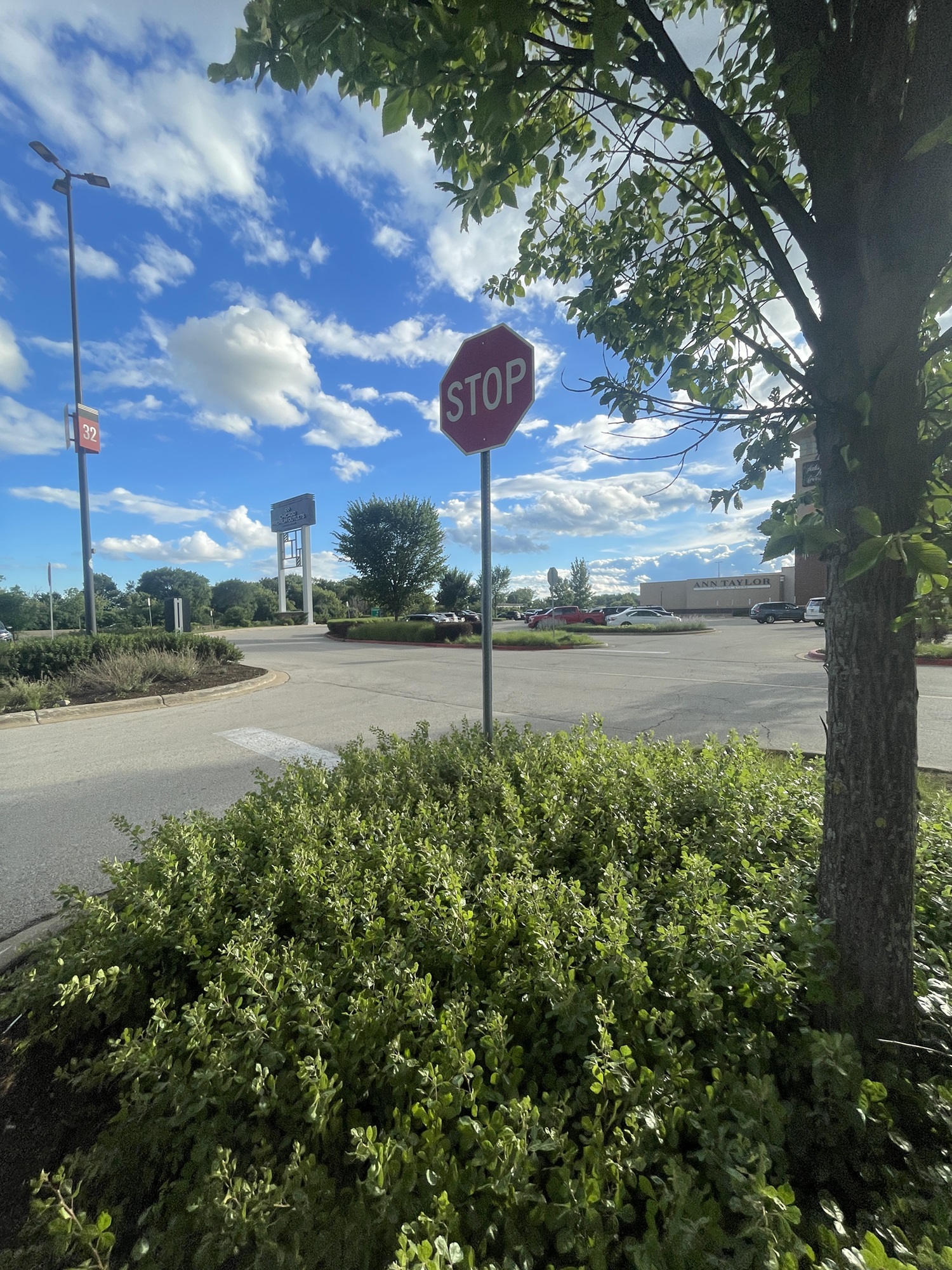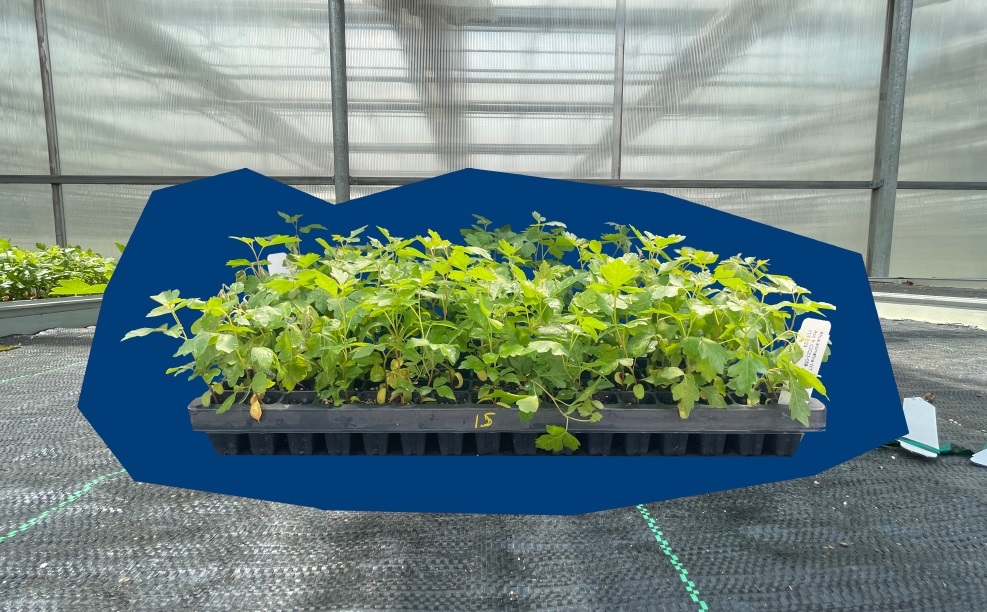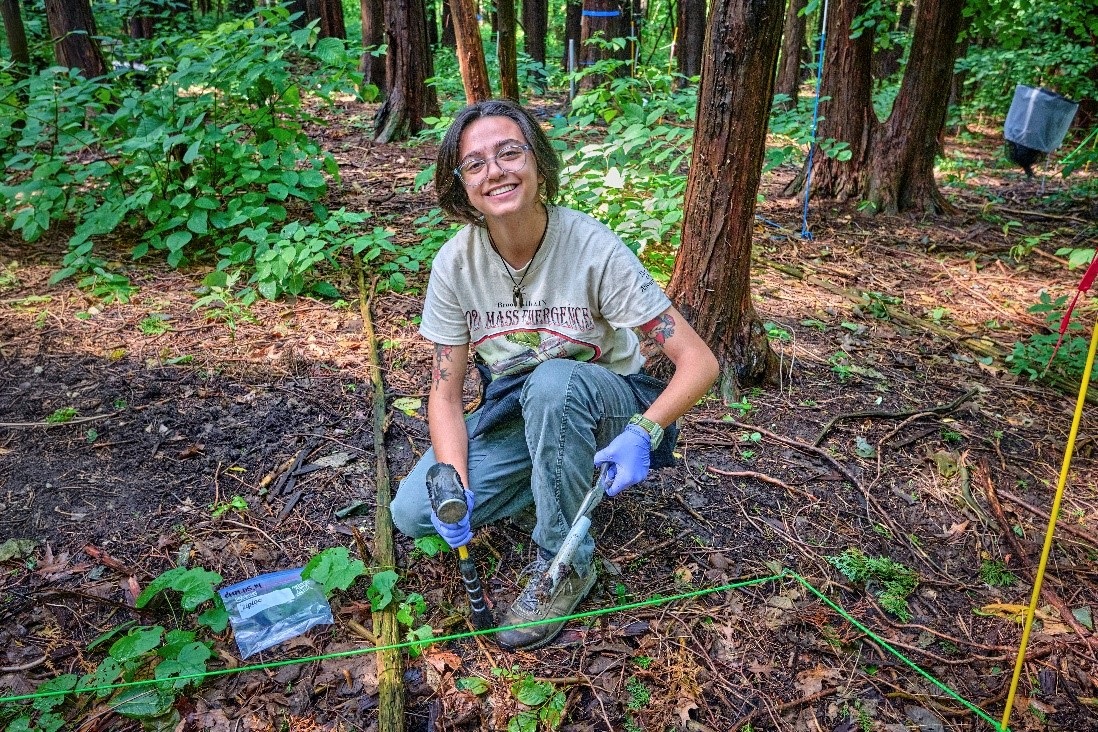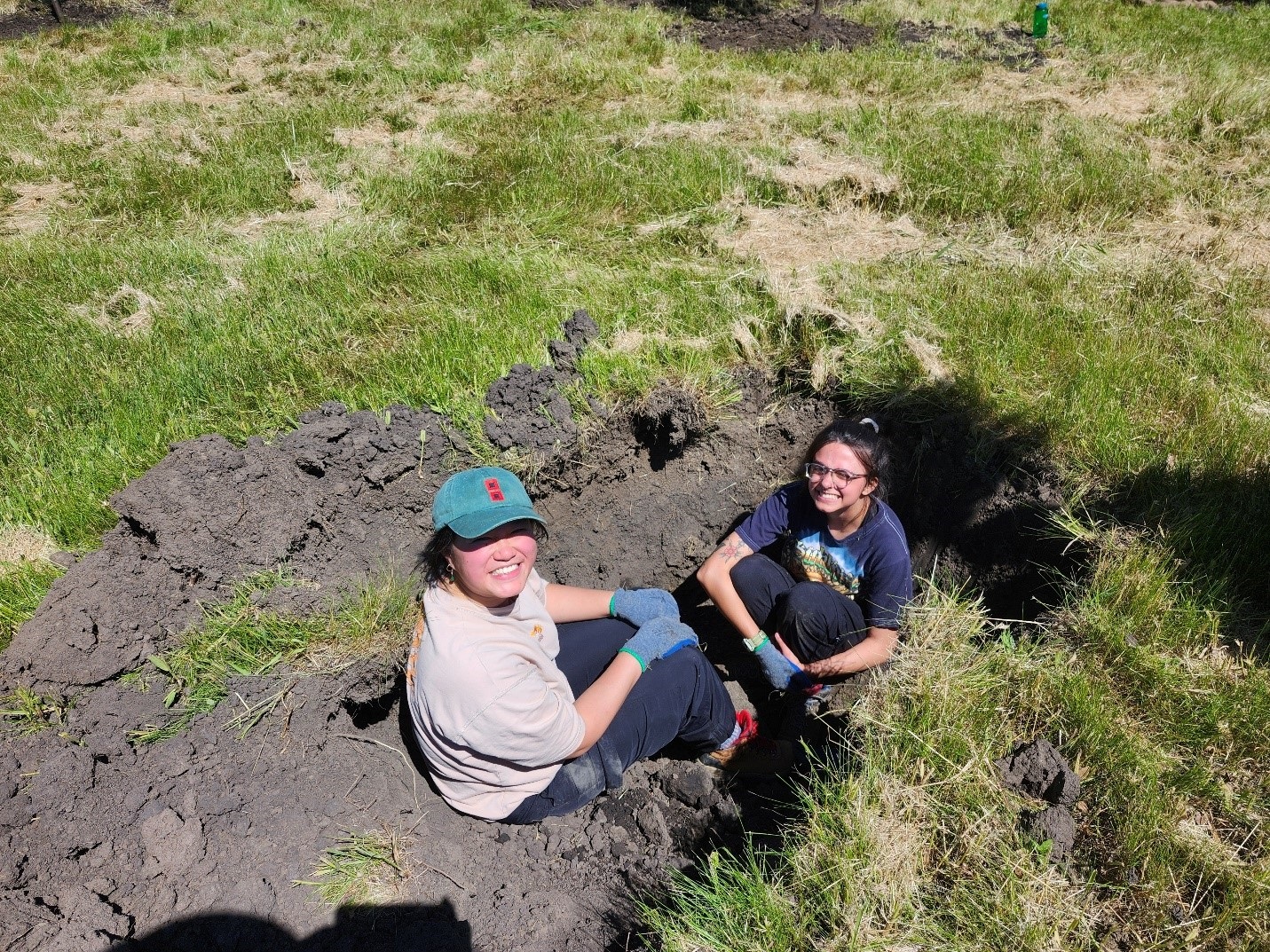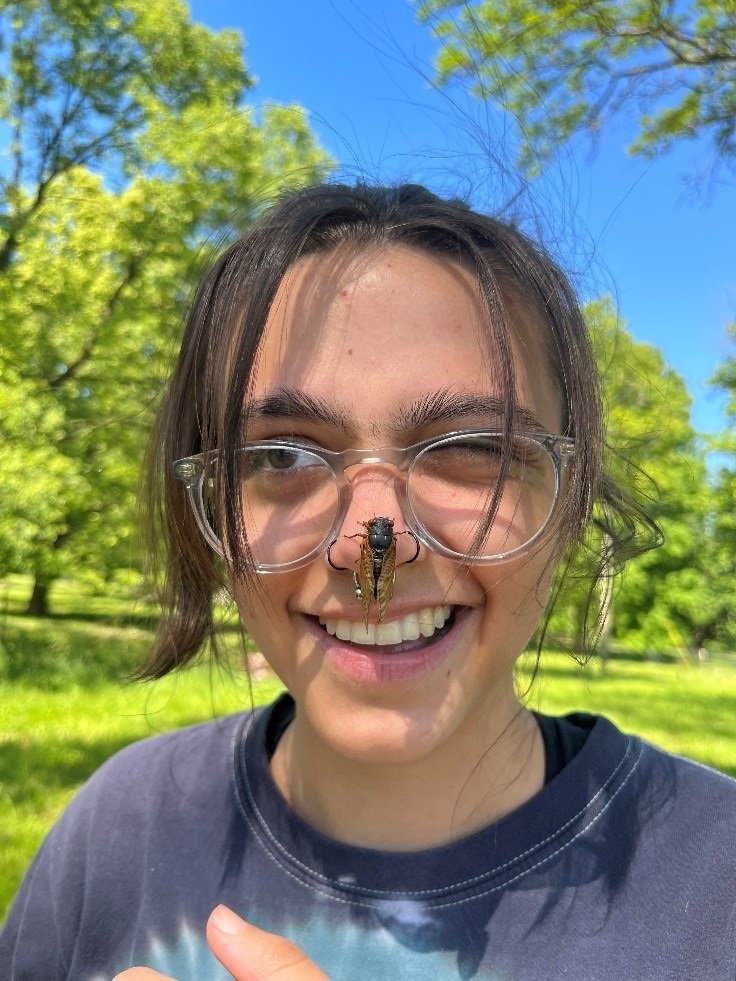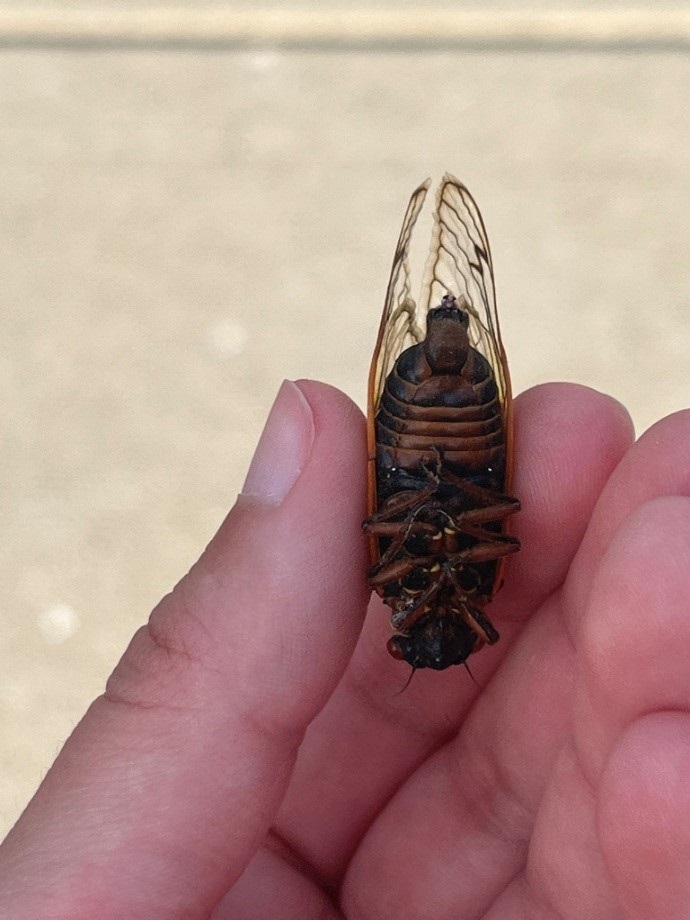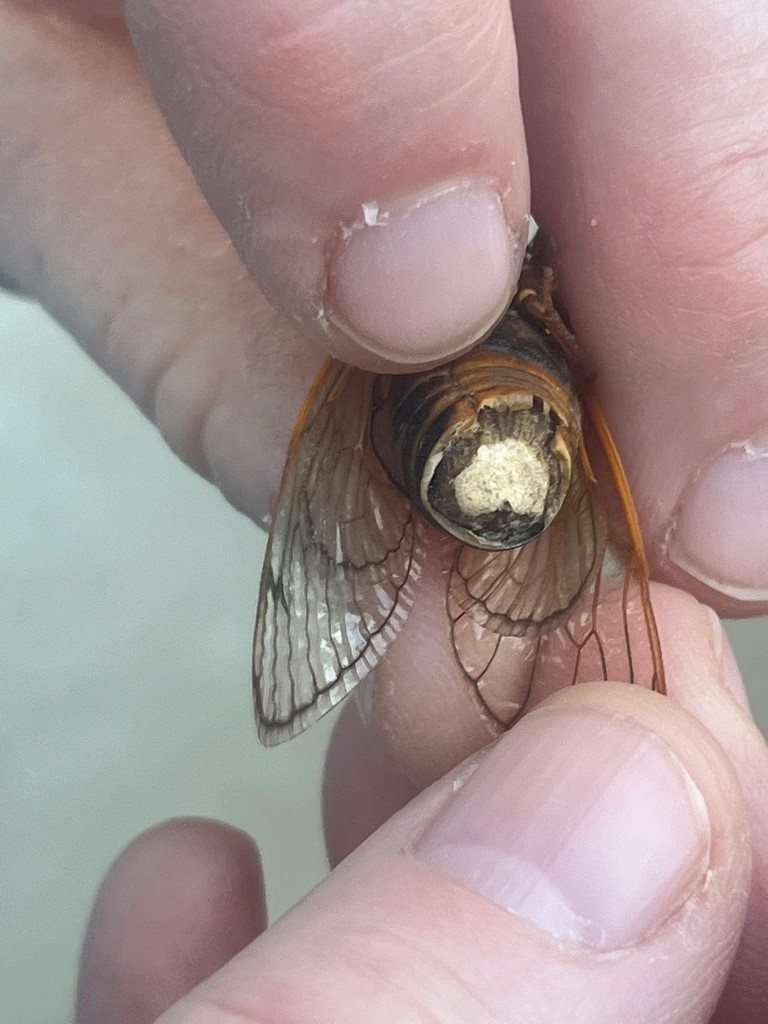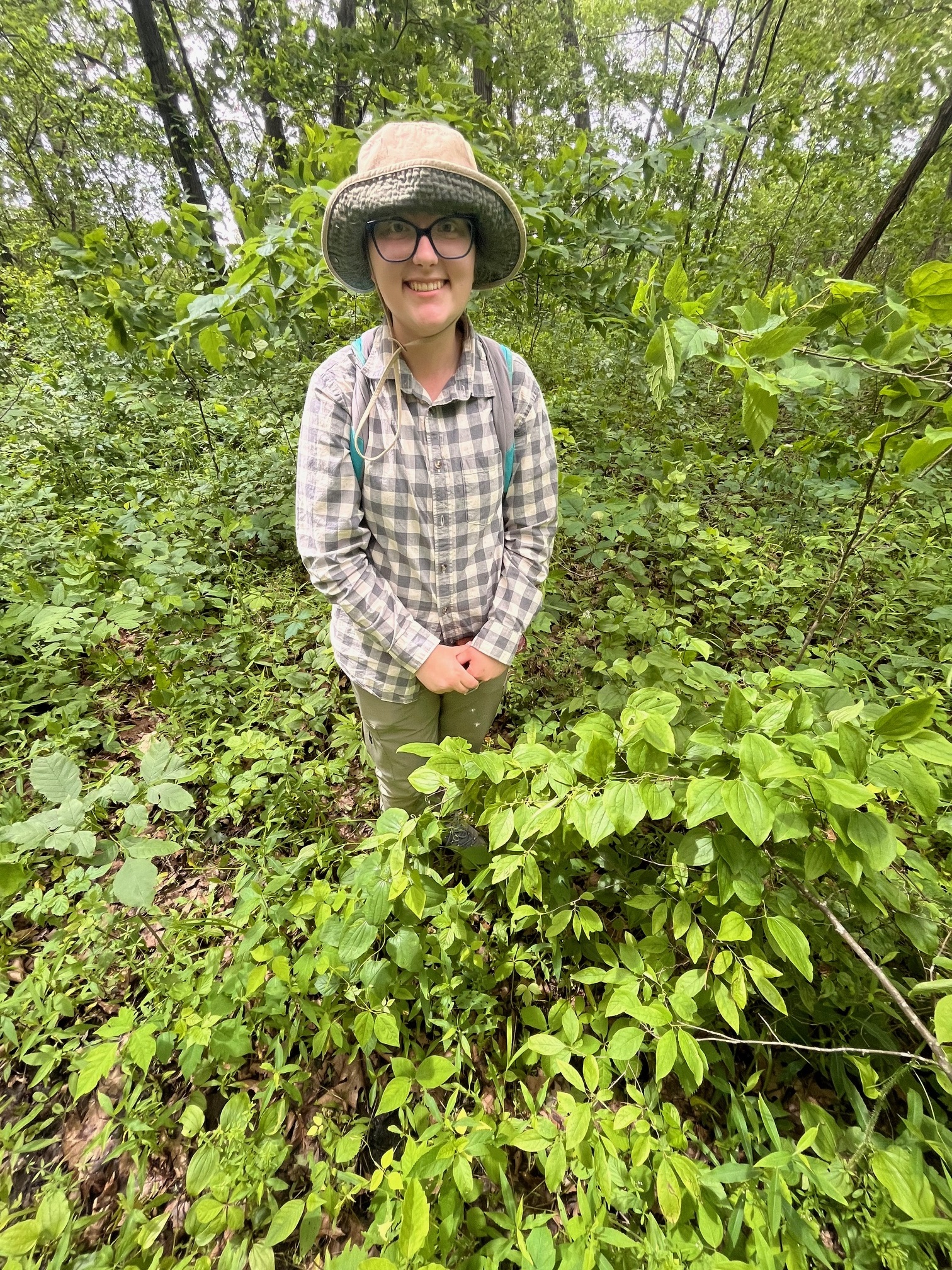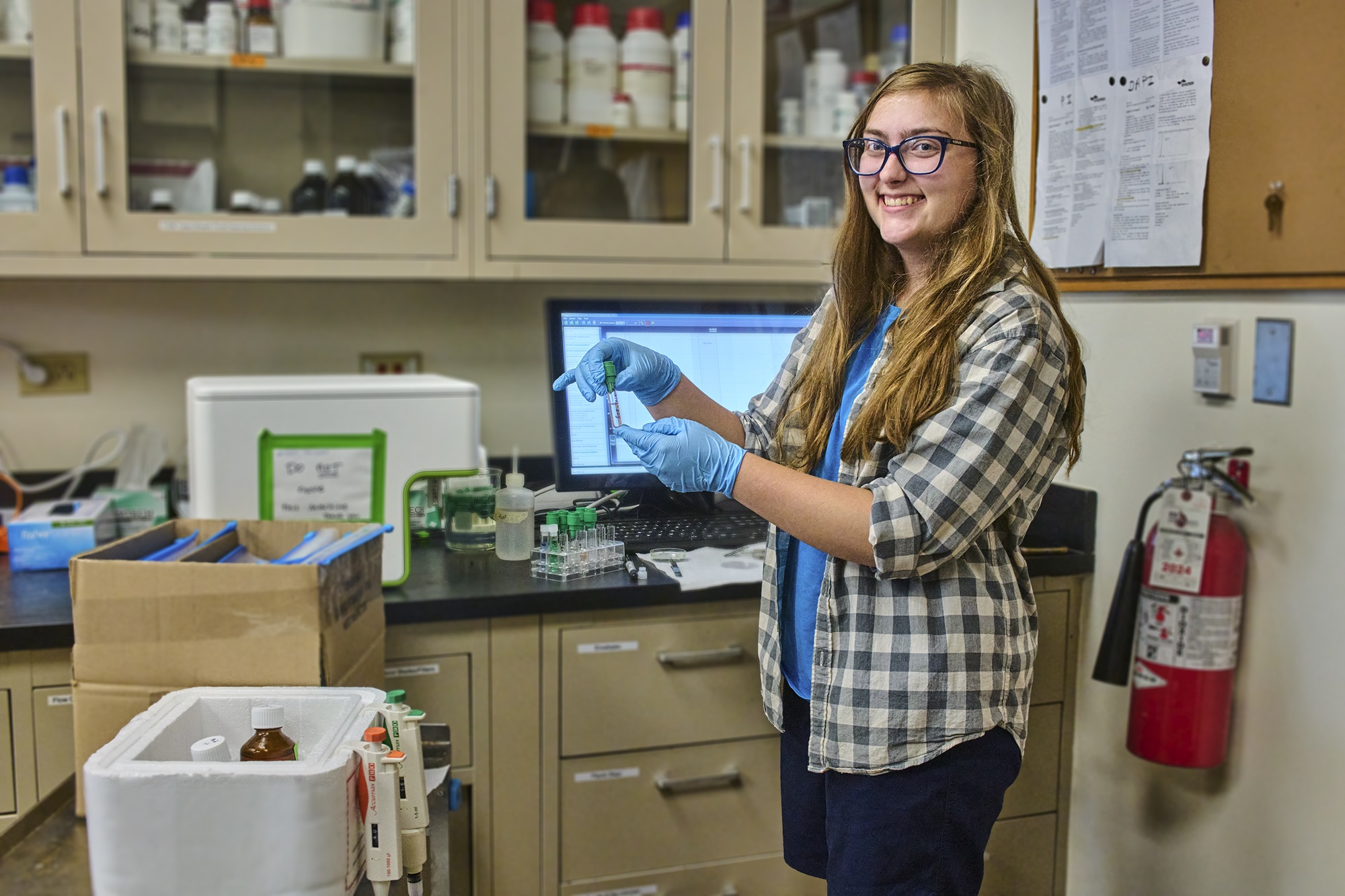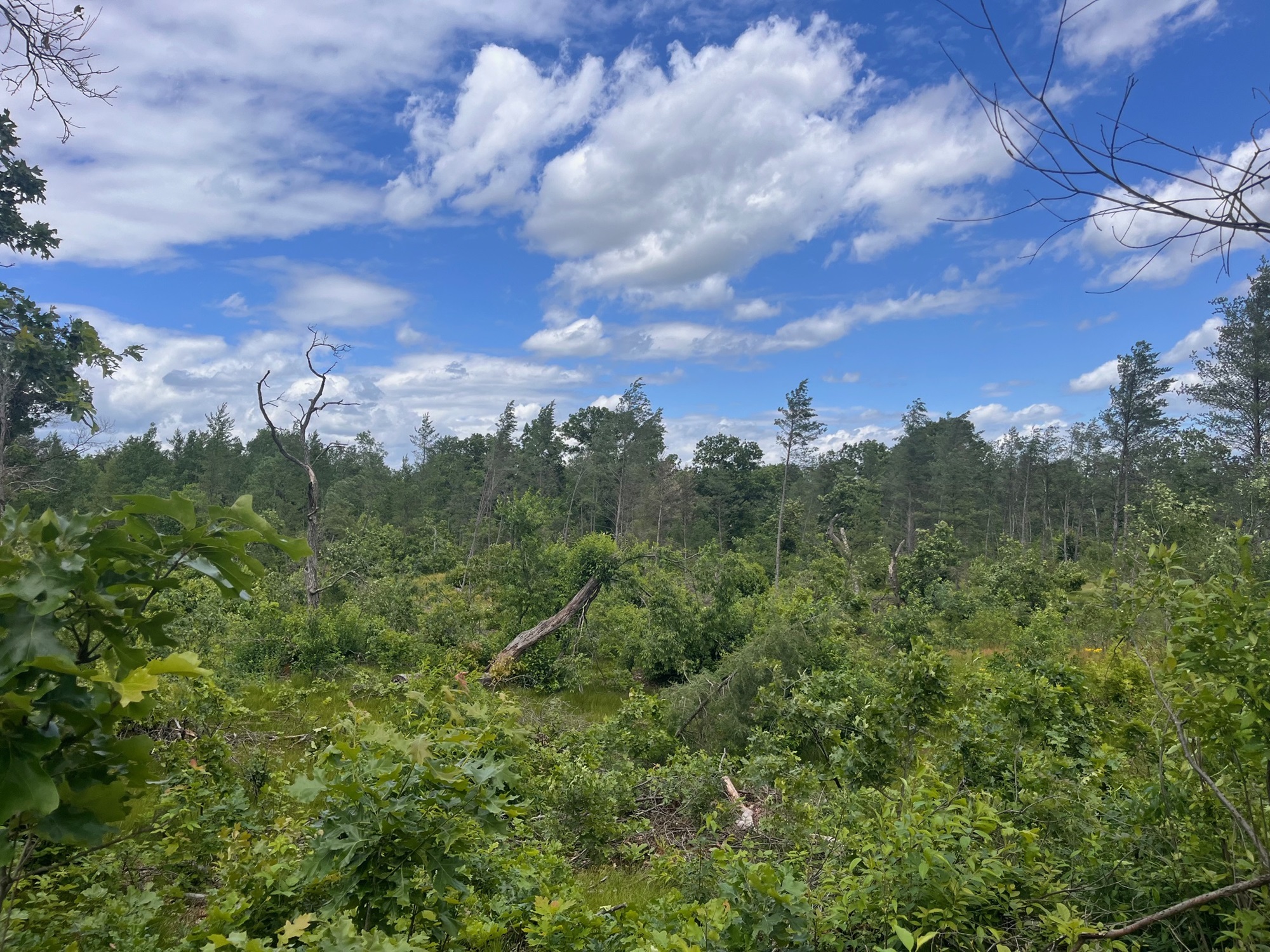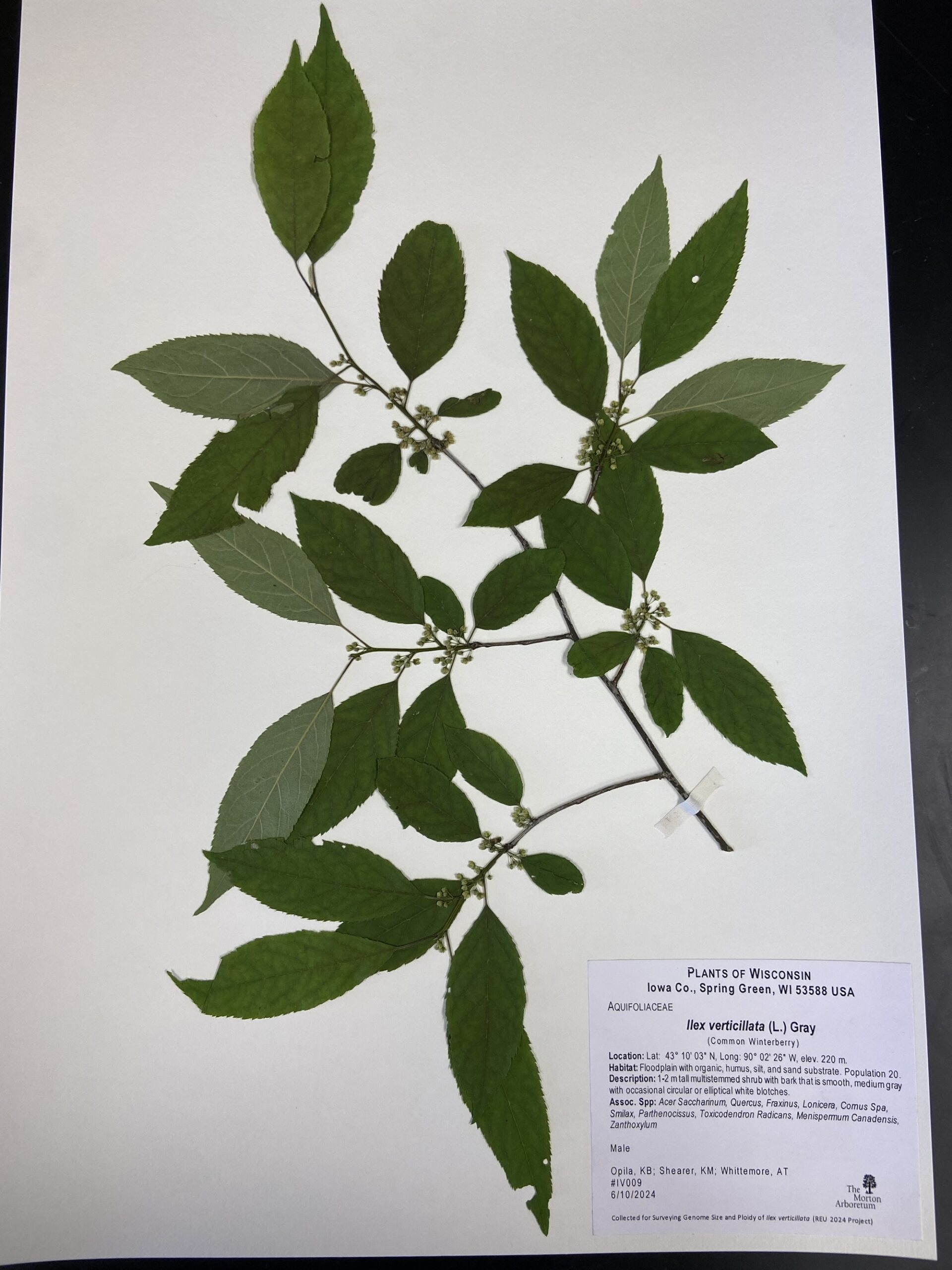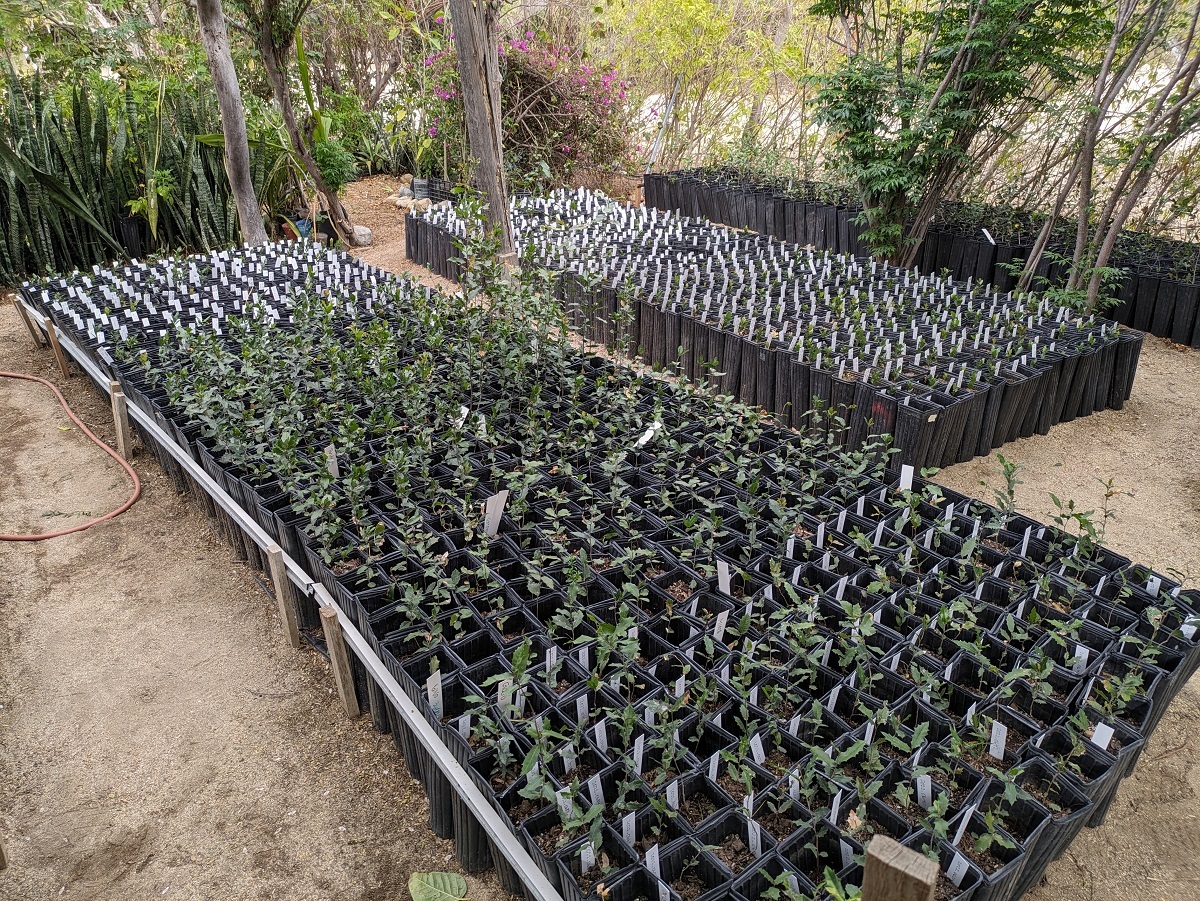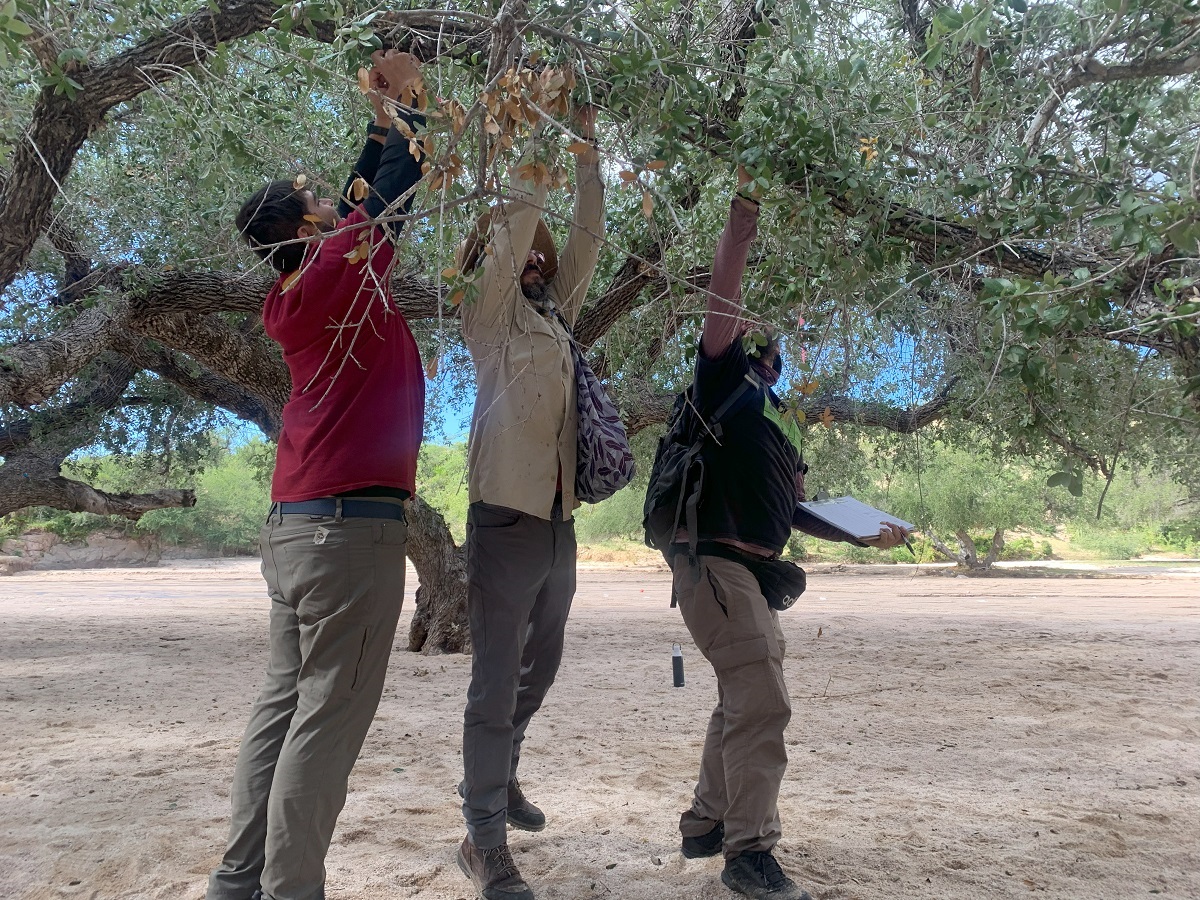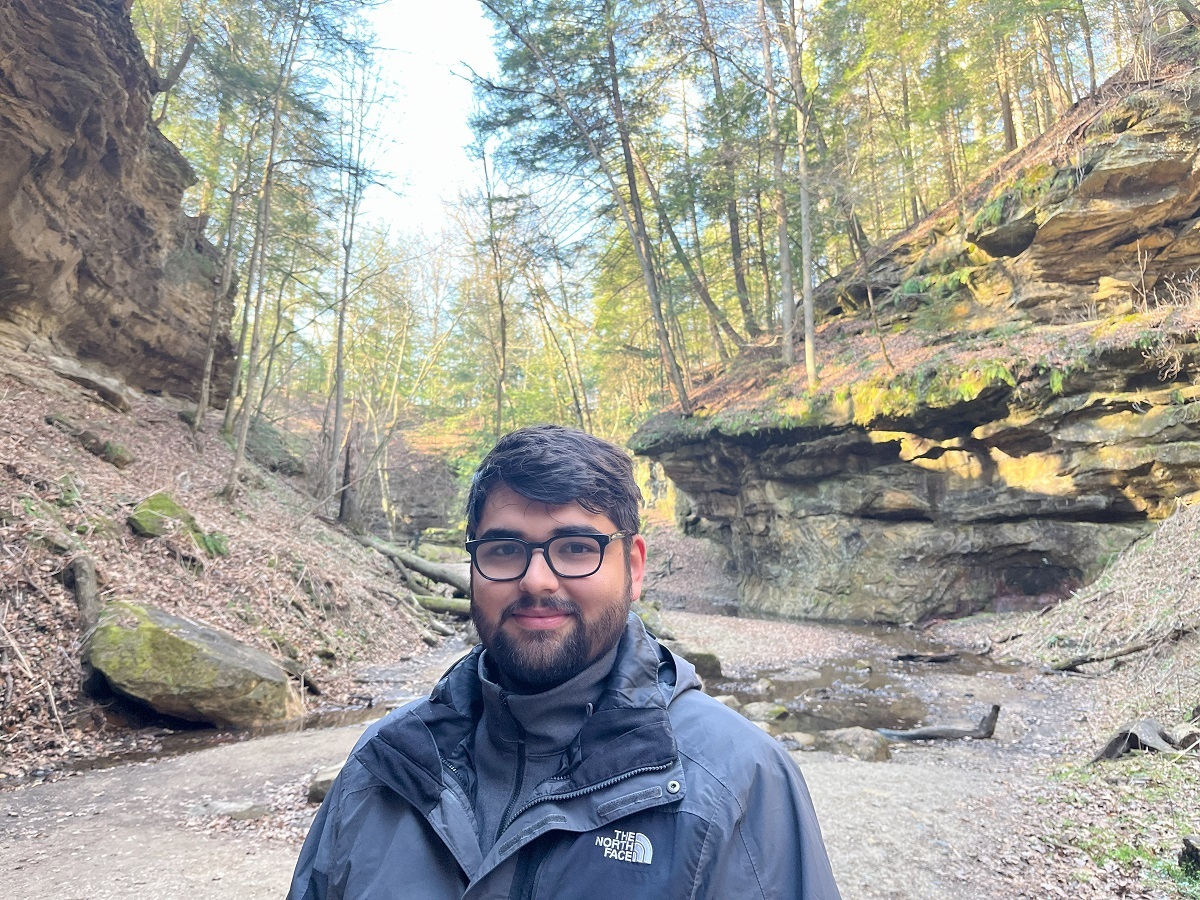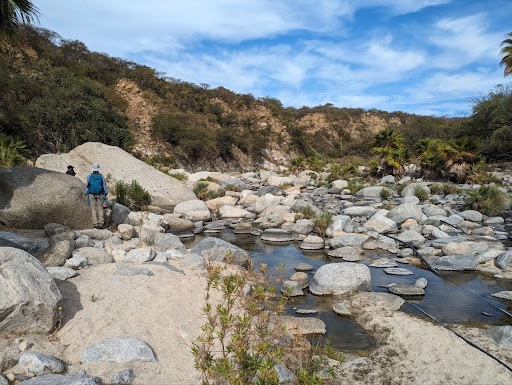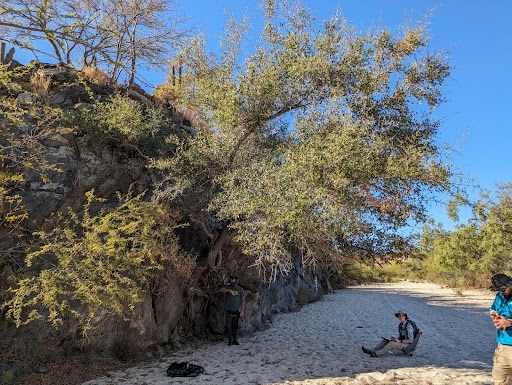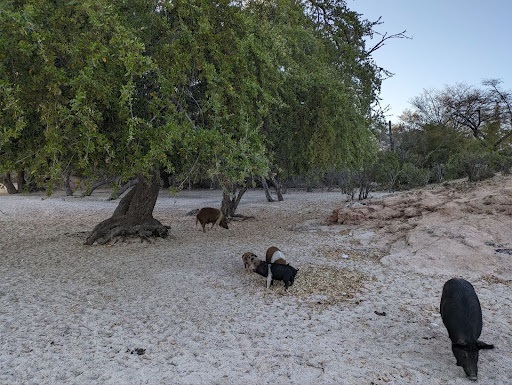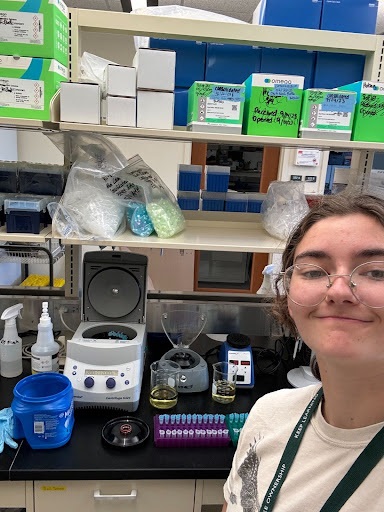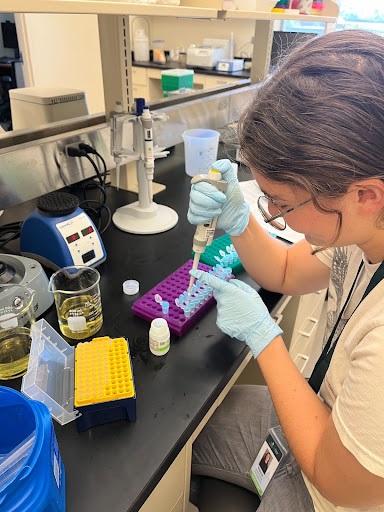Student researchers in the annual Research Experiences for Undergraduates (REU) program use trees as model systems to investigate questions related to evolution, ecology, conservation, and management in natural and built environments.
Individuals gain direct experience in all aspects of a research project, from researching the primary literature to sampling design, collecting and analyzing data, and presenting at a final symposium.
Learn about the projects and experiences of the 2024 student researchers in this Student Blog Series.
Sara Ahlich
Summer 2024, University of California Berkeley
Evolutionary Ecology Lab
“Exploring the connection between species abundance, importance value, and ethnobotanical use in Amazonas”
Hello! My name is Sara Ahlich, I am a Conservation and Resource Studies major at UC Berkeley and an REU at The Morton Arboretum this summer.
As you may know, the Arboretum is a “living museum” that houses trees from around the world for research, cultivation, and appreciation. My work this summer focused on a forest ecosystem that is quite different from the collections at the Arboretum – the Amazon Rainforest!
Why research the Amazon from the suburbs of Chicago? Good question. I was fortunate to work with the “Welcome to the Jungle” team, an interdisciplinary and multi-institutional team of engineers, scientists, students (and more!) that participated in the X-PRIZE Rainforest – a global competition to develop novel technologies for biodiversity monitoring in tropical forests. While the team worked on a number of innovations, I helped on the ethnobotanical side of things by creating a database of the trees that we may encounter during the final competition in the Brazilian Amazon.
As a large part of the team’s work was using drone imagery, I wanted to identify the species whose crowns would be visible from above. To do so, I scoured dozens of books and articles to identify canopy and overstory trees of ethnobotanical importance in the region where the final competition would take place. Once I found a species that fit both the location and height criteria, I detailed information such as: which indigenous people and local communities use the plant; how the plant is used; which parts of the plant are used; and plant-animal interactions. The idea here is to link the drone-identified species with the ethnobotanical database, so that our team could provide a more holistic view on the cultural value and diversity of the Amazon rainforest.
As much as I have come to love the Arboretum landscape over the last several weeks, I was incredibly excited at the chance to join the X-PRIZE team at the final competition in the Brazilian Amazon. After landing in Manaus (aka Brazil’s “gateway to the Amazon”), we took a two-hour speedboat ride up the Rio Negro to a local community called Tumbira. It was here that our Amazon adventure started – we learned of the many dangerous insects and reptiles and plants (oh my!); the potential for pirates roaming the river; and the dangers of the sweltering heat and suffocating humidity.
Despite these threats looming in the back of my mind, our week in the Amazon flew by without any major hiccup. As someone who is quite ignorant to tech, I learned a great deal from the X-PRIZE team on the potential of drones and other emerging technologies in environmental science, forestry, and conservation. One of the most valuable aspects of my time in Brazil was talking to locals in the community, which enhanced my understanding of and connection to my research. In addition to being able to practice my Portuguese, I learned about plants and animals from members of the Baniwa indigenous group; natural dyes and life in a Sustainable Development Reserve from a local artist; and of navigating changing ecosystems and climates from a rural family.
Participating in The Morton Arboretum’s REU program and the X-PRIZE Rainforest competition has been an inspiring way to witness the real-world impacts of conservation and research – it truly drives home the fact that inclusive and multidisciplinary collaboration is the key for effective science and equitable change.
Miranda Chiong
Summer 2024, Lehigh University
Forest Ecology Lab
“Tree-Ring Patterns During Oak Establishment May Offer Insight Into Oak Decline”
Close your eyes and think of a tree. Did you picture an oak tree? Oaks are very common in the northern hemisphere and we often take them for granted, I know I did. I never really thought much about the different species of trees I encountered when I walked outside or went on a hike. I didn’t think much about trees in general until I started doing research in our new forest ecology lab at Lehigh University and I didn’t think much about tree rings until I started at The Morton Arboretum’s REU. I’m a double major in molecular biology and political science and I never thought I would be spending my time researching tree rings but it turns out it’s something I’ve grown to really enjoy!
Oaks are incredibly important to the environment. They are a keystone species, or a species that ecosystems rely on, and without them the ecosystem can change rather dramatically. Unfortunately, oaks are doing quite poorly, and we’re trying to understand why. Oaks used to be much more prevalent as their total ecosystem area used to occupy about one million acres in Illinois in 1839, but as of 2010, oak ecosystems only occupy 173,000 acres, which is about 17% of the land area it used to occupy almost 200 years ago (Oak Ecosystem Recovery Plan). Land use has changed quite drastically since the 1800s which has contributed to the loss of these ecosystems. Losing this much area means there might be more competition for shared resources such as water, nutrients, and light. Having to fight even harder for these resources means it can be more difficult for trees and plants to grow and new plants to establish or begin to grow. This competition might have impacts on long-term oak growth.
So for my project, I am analyzing tree rings during the establishment years to see if there are patterns corresponding to growth rate and establishment conditions.
An incredibly important part of using tree rings for my research is prepping samples so I can look at them under the microscope. I use a belt sander to make the surface of the wood smooth and to get rid of any big scratches left over from when they were cut into smaller pieces. Then I use a palm sander to make the surface even more clear. Once the sample is all sanded it feels like glass! Now that the sample has been sanded I can take it to the Forest Ecology lab to see how old it is.
The next step in the data collection process is dating, or lining up the growth rings with specific years. Dating is not as simple as counting backward from the outside until we reach the pith or the true center of the sample. We can start by looking at the outermost ring that I can see and work my way counting backward until I reach the center or the most center ring whether that’s the pith or just the last visible growth ring we can see. However, as we are looking at the rings, we are also trying to keep track of growth patterns in the rings and matching those patterns with other samples that have been previously verified. To help with this, we use the master chronology which was created using patterns of differences in growth from year to year to then create a master pattern of what years could have bigger or smaller rings for trees in the Chicago area.
After we date a sample, we can get to measuring it. I take the sample to a different microscope so I can measure it. We can measure the width of each tree ring to see how much that tree grew in a particular year. After we measure the sample we can begin to analyze the data which is the next step of my project!
In the next few weeks of the program, I will begin to analyze the data I have been collecting to determine if there are any patterns between ring growth and establishment conditions. Even just halfway through the program, I have learned so much about tree rings and what they can tell us. Tree rings can offer much more insight into a tree’s life than just how old it is and I’m excited to continue learning. While I have already learned so much at The Morton Arboretum, there is still so much to learn and so much more to enjoy!
Deborah Duong
Summer 2024, Saint Joseph’s University
Root Biology Lab
“On the Road to Find the Thirstiest Tree”
Growing up in a large city like Philadelphia, my experiences with nature were limited and filled with pavement and the whizzing sounds of buses and cars passing by. Living in urban areas leaves city-dwellers unaware of the miracles nature performs everyday. When walking through mundane cookie cutter rows of homes, I could look up and find myself in awe of the rows of London Plane trees towering over homes, casting a kaleidoscope of sun and shade onto the sidewalks and roads below. Living in an urban environment provides me with first hand experience of the importance of urban greenery.
My research this summer focuses on analyzing the drought tolerance of Chicagoland’s urban trees. The Morton Arboretum’s Root lab is researching drought tolerance using a machine called an osmometer, which quantitatively measures how tightly leaves hold onto water. We hope the information from this research can provide a more clear understanding for Chicagoland’s urban planters and planners on what trees are best suited for urban environments. Studies have indicated that urban trees and greenery are imperative to the community, both ecologically and culturally, as they provide cooling to the area and improvements to mental health.
During an average week, I would drive around The Morton Arboretum to gather samples, explore the grounds, and work on my tree identification skills. With the samples gathered, I cut leaf discs and submerge them in liquid nitrogen to have my samples prepared and ready to be measured. I measure my leaf discs with my great buddies Lola and Reggie, the osmometers. Lola and Reggie have the most important job of measuring how tightly the leaves are holding onto water, which provides us information on how drought tolerant the tree species is.
These measurements alone only provide a small snapshot of how a tree’s drought tolerance performs because leaves of a tree are only one small cog within a living and growing tree. In an attempt to have a larger picture of how and why a tree is performing, I measure other traits, such as chlorophyll content of leaves, wood density, and leaf area. With these additional traits, we will observe if there are any possible correlations between certain traits and drought tolerance in the Chicagoland urban trees. If there is a strong correlation, measuring an indirect trait would be an easier and more time efficient way to quantify drought tolerance in urban tree species.
Kathryn Lightfoot
Summer 2024, Purdue University
Woody Plant Chemistry and Biochemistry Lab, Haerther New Plant Development Program
“Understanding the Chemotaxonomic and Genetic Collinearity of Rare Trees”
It’s a Friday, and while I’m excited for the weekend, I have more immediate plans. I need to get the HPLC, or high-performance liquid chromatography, up and running. I have over a hundred samples to run, with each one taking about an hour, so letting the machine run over the weekend is crucial to get my work done in an efficient manner.
I’m headed into my senior year at Purdue University, where I study Plant Genetics, Breeding, and Biotechnology. I’m not entirely unfamiliar with research; however, I had never done research on an intense or focused scale until this summer. I had also never been in a position of working on my own project as opposed to simply completing tasks for someone else’s. When I started, having 10 weeks to do a research project felt like an eternity. That’s nearly a whole semester! Two and a half months! Six weeks later, I’ve accomplished a lot, but efficiency has been the key.
The project that I’m working on this summer involves an endangered birch tree, the Virginia round-leaf birch, which is endemic to Smyth County in western Virginia, and comparing it to the more widespread sweet birch. The Virginia round-leaf birch is incredibly interesting because it’s only ever been found in one grove, specifically in an area with high levels of mining byproducts. There is some debate over whether the Virginia round-leaf birch is actually a species or a subspecies of sweet birch and my goal this summer is to do an in-depth biochemical analysis of the two and see if that can be used to settle the debate. Using the HPLC can help with this because you can compare chemical compositions across species. A very similar chemical profile between the two could indicate that the Virginia round-leaf birch is a subspecies, but a highly unique profile could confirm a separation of the two species.
I started the summer by collecting bark and leaf samples from adult trees, as well as seedlings. The samples I collected were ground up with liquid nitrogen and then methanol was used to extract compounds within the sample. It took about a week just to grind everything up! From there, it felt like a nearly endless cycle of pipetting and centrifuging, but my samples are finally ready to analyze with the HPLC.
Before I can start a run though, a program has to be designed for each type of tissue in order to achieve the best possible results. I’ve had a few long runs so far, but this will be my longest yet, taking over 4 days! This will also be my last big run of the HPLC!
When I come back on Monday, I will have lots of data to go through and analyze, a process that may actually be longer than the data collection. Luckily, I still have four weeks left and should be able to get it done before I present in August. Having the opportunity to work on (and hopefully complete!) a research project has really confirmed for me that working in research is something I want to do. I’ve enjoyed getting hands-on experience with things I had only learned about in the classroom setting and seeing the research process from beginning to end. I plan to finish my undergraduate degree in the spring, and while I don’t know precisely what I will be doing after, I now have more confidence in my scientific abilities and a heightened interest in my field of study.
Lucas Mansfield
Summer 2024, University of Washington Seattle Campus
Evolutionary Ecology Lab
“Utilizing Remotely Sensed Drone Data for Rainforest Analysis”
Today my alarm went off at an agonizing 2 a.m.. I rolled out of my small cot, slid into my rubber boots, applied a thin layer of bug spray, and opened the front door of my cabin, entering into the Ecuadorian Amazon. Although almost every soul in the Tiputini Biodiversity Station was asleep, the night was alive – frogs, birds and howler monkeys combined to make a noisy atmosphere. I carefully hobbled over to the nearby lab building where I met with my mentor, Dr. Chuck Cannon, along with Dr. Jinha Jung of Purdue University and Dr. Anjin Chang of Tennessee State University. After ensuring that all four of us were able to wake up, we headed down the muddy trail towards the dock where our drones were waiting beside the river. As we entered into the small clearing by the water, the sound of a large animal being flushed froze us in our tracks. We all had the same fear: could a jaguar or a puma be stalking us?
A quick flash of Dr. Jung’s light, however, revealed a lone capybara and with our worries settled we continued to the dock. We readied the drone and backed up, as Dr. Chang used a control tablet to lift the aircraft. After it reached a sizable height above the canopy, the drone turned and flew due north. We all huddled around Dr. Chang to observe the drone’s view from the tablet’s large screen. For this particular flight, the drone was equipped with a thermal camera which draped the canopy in a collage of deep purples and black. The river shone with a bright orange, and our bodies glowed like beacons in the night. As the drone traveled further into the forest, we scanned the screen for small yellow dots in the trees – we hoped that the thermal camera would be able to locate monkeys and large birds roosting in the canopy at night. After the flight was complete and the images had been gathered, the drone returned to its launchpad and we hustled back up the trail to our cabins. I pulled off my now dirtied rubber boots on the porch of my cabin, and hurried back into my bed.
I was only able to get a couple more hours of sleep before my alarm went off again at 6 a.m.. Breakfast was at 6:30 a.m. sharp and that meant you had to wake up or wait until lunch. I chose the former, and slowly made my way towards the large dining area. We were deep in Ecuador’s Orellana province and over six hours of travel away from El Coca, the nearest city. It had taken us three days to reach the station from Chicago, but it was a trip we had to make. At The Morton Arboretum, we are part of the multi-institutional Welcome to the Jungle team competing in the XPRIZE Rainforest Challenge. Several years ago, XPRIZE initiated a competition that challenged groups of engineers and scientists to develop a method for rapidly and autonomously surveying a patch of rainforest. Now, the challenge was wrapping up as the final competition held in the Brazilian Amazon was only a month away. Our team had performed well at the semifinal competition in Singapore, but the Amazon rainforest was a different beast and we needed more practice. So I, a rising senior at the University of Washington, found myself at a remote research station buried in the lungs of planet Earth.
After finishing breakfast, I met up with Dr. Cannon and Nico, a local research assistant who was serving as our guide. We approached the long Guacamayo trail and began our hike. During the days, Drs. Jung and Chang flew the drones over the rainforest surrounding the station, while Dr. Cannon and I hiked around the trails identifying and marking trees with a handheld GPS. Our goal was to create a large dataset of ground-truthed trees with a known identity and location, in order to create a training set to develop a framework for identifying tree taxa from high resolution aerial imagery captured by the drones. For the competition we have 24 hours to fly over the final patch of rainforest, and the following 48 hours to analyze the data and submit a report that highlights any important insights about the forest. Being able to identify most of the trees in the patch would be a perfect inclusion in the report, but would also be almost impossible without any sort of training. We hiked north of the camp all morning, looking for trees that were common both in the Ecuadorian Amazon and the portion of the rainforest outside of Manaus, where the final competition would take place. Each time Nico or Dr. Cannon noticed a potential candidate tree, we bushwhacked off the trail until we were underneath the crown, and marked the location with the GPS. Although there were no toxic plants like poison ivyfor us to worry about, we had to make sure that we avoided pit vipers, bullet ants, and stingless bees (which will bite if disturbed).
After breaking for lunch near the highest point of our hike, we made our way back towards the camp, marking a few more trees as we went. We arrived back at the station with enough time before dinner for me to head out to the camp’s observation tower. The tower is only a short walk from the cabins, and rises 35 meters into a tall Ceiba tree, providing a sweeping view of the surrounding forest. Here, I spend my free time observing the diverse birds of the Amazon, seeing unique species such as the white-throated toucan and black-headed parrots. When the sun started to set, I scaled back down the tower, one foot at a time, and headed to dinner.
At dinner, Dr. Cannon and I traded details of our excursion with the drone crew over a meal of locro de papa and birthday cake. We spent the rest of the evening in the air conditioned lab, where Dr. Jung processed the LiDAR data collected by the drones into a three-dimensional point cloud model of the forest. Dr. Cannon and I took the points we had collected on the GPS and overlaid them onto a large two-dimensional image, called an orthomosaic, of the forest. We noticed immediately that many of the tree taxa were visually distinct from above, and we began using our known sample of tree crowns to classify others that we had not tagged. Once I am back at the arboretum, I will continue this project, using GIS to develop a method for segmenting the high resolution drone images into each individual tree crown, which we will then independently identify both by hand and with a machine learning algorithm. We hope that this framework will not only assist us in winning the XPRIZE Rainforest Challenge, but also aid future forest surveys worldwide by providing a quick and easy way to estimate biodiversity.
Julian Marshall
Summer 2024, Binghamton University
Plant Health Care Lab
“Unraveling Fusarium Wilt in Gro-Low Sumac”
Growing up in a big city, I never really experienced the same type of nature that people growing up in more suburban or rural areas did. My ‘nature’ consisted of manicured public gardens and only intermittently involved real wild and wilderness areas. In college, I got to really experience the seasons for the first time, watching trees bud for the first time and ephemeral flowers pop up like whack-a-mole games. It’s almost ironic that my first research project outside of school involves those ornamental plants which I spent my youth ignoring.
With that in mind, I’d like you to take a look at the photo below:
What do you notice about it… any thoughts or observations?
How about these photos:
You may be thinking now about urban sprawl, or perhaps America’s reliance on the dreaded ‘Auto-Mobile’, but what if I told you that in each of these photos was a moneymaker. A cash crop like no other. “I don’t believe you”, I hear you say, but prepare yourself for a shock.
Let me introduce you to the Gro-Low Sumac, a variety of aromatic sumac (Rhus aromatica) that excels in its discretion.This undeniably reserved shrub is a master at its craft – withstanding harsh landscapes with its impressive salt tolerance and softening the view with mellow green and red (in autumn) tones.
Recently, this shrub has been subject to infection by a prevalent species of plant pathogen, Fusarium oxysporum. You might recognize this species as that which killed off the Gros Michel cultivar of banana in the 1950’s, or perhaps the cause behind your tomato or beetroot wilt, but the fungus in recent years has also expanded to infect Rhus aromatica. What happened recently that started this attack? I don’t know – yet.
Currently, I’m trying to figure out what greenhouse practices could allow this fungus to infect the sumac with greater ease. Things that stress the plant out may provide an opportunity for the fungus to pounce. Sub-par growth conditions, other pathogens or even wounds caused by common handling practices may all cause the plant to divert more energy away from its immune response and open an opportunity for Fusarium to be successful.
Growing the sumac in conditions of various stress will offer insight into what aids the fungus in infection the most. Something that can be communicated to the nurseries to allow more effective growth of this incredibly popular crop.
Before I can, I have to first finish growing the plants to which I introduced the fungus, and then re-isolate the same fungus from the dead and withered plants to finally confirm that it was Fusarium doing the killing all along.
Even through all this sumac derived death and discomfort, I cannot help but geek out at all of the fungi that I’m getting to isolate and identify. Unlike some others, my foray into the world of plant pathology was not through the leafy lens of plants. I was beckoned by a mushroom-y finger to study not the roots and leaves nor bark of trees, but instead, what lies inside. At school, I’ve warped all assignments into an opportunity to write more about fungi and eventually that led me here, to the Morton Arboretum. With this new, decaying, and rotting feather in my proverbial cap of mycological experience I’m excited to continue my work in the fungal field soon!
Jada Martinez
Summer 2024, University of North Texas
Root Biology Lab
“Seasonal Variations in Enzymatic Activity Associated with Ectomycorrhizal Fungi in Forest Soils”
Delving into Mycorrhizae Mutualisms ft. Cicadamania
Growing up in North Texas I was surrounded by prairies with woody encroachments, where I would frolic and enjoy the bugs and little animals that existed in peace. In that part of Texas, there were no forests, I do not think I have ever been into a forest before coming to the Morton Arboretum. When I found out about this REU opportunity I was ecstatic because I would be experiencing something completely new. I had rarely been outside of Texas let alone live in another state, but in May of 2024 I moved to Illinois for the summer to work at the Morton Arboretum; little did I know it would be one the best experiences in my life so far.
Mycorrhiza
The research I conducted was analyzing the enzymatic activity associated with ectomycorrhizal fungi. ectomycorrhizal fungi (EMF), a symbiotic association between fungi and roots where both partners are mutually benefitted. Fungi are vast in type; they can be pathogenic, symbiotic, or parasitic. Mycorrhizal fungi are a symbiotic mutualist towards roots. There are types of mycorrhizal fungi, which differ in colonization type and in how the hyphae interact with the root cells. In short, trees send carbon down belowground to roots and fungi then in return, enzymes are exuded into the soil – breaking down complex nutrients into simpler forms such as carbon, nitrogen, and phosphorus to be absorbed by the root.
The process of enzymes being released into the soil is a functional trait of fungi. A trait is a measurable trait of an organism that can be measured at various levels; they consist of morphological, physiological, or phenological characteristics. Functional traits are characteristics that are expressed from an individual organism, for example enzymatic activity is a functional trait of mycorrhizal fungi. I am also looking at the phenology, or the timing of enzymatic activity throughout the year. Overall, understanding the phenology of EMF associated enzyme activity can aid in understanding more about the functions of EMF, since current research is geared towards community assembly and not so much on the functionality of belowground ecosystems.
To understand the phenology and belowground enzymatic activity, collecting the samples and determining which tree plot to choose from was the first step. The plots I chose (from a vast array of plots species that exist on The Morton Arboretum grounds) were white pine and shagbark hickory which are both associated with EMF. The materials needed to collect the soil consists of a metal tube, plastic bag, hammer, and plyers. Soil samples are collected once a month from each plot; once we get to a plot—we hammer the metal tube into the ground below the leaf litter layer and pull the tube out and it will contain the soil matrix that is used for this project.
After the soil cores are collected, they are placed into the freezer to store and come back to when it is time to conduct enzyme assays. Conducting enzyme assays will give greater insight into the amount of enzymatic activity there is in the soil. This experiment is a two-day process—not including dish cleaning time. Each subplot (there are six subplots in each plot) is a different sample that needs to be turned into a slurry and prepped to be pipetted into a plate for enzyme assays. The first part of preparing the soil and plates takes about a full workday and then the second day consists of adding enzyme substrates to the plates and then reading them. Throughout this process I have become more confident in my pipetting skills, missing a well in the plate could skew results, so I had to be steady.
Once I had the numbers from the enzyme assays, the rest of my daily activities consisted of data cleanup and R coding. I did not come from a background in data analysis, statistics, or R coding so all of these were completely new to me, but I had a spectacular time learning how to conduct the lab experiments and code in R.
Fun Activities
The first week I was at The Morton Arboretum, a tree planting was occurring. I know what you might be thinking, ‘omg a tree planting’— like a small tree, small root system, but that is not what it was. The tree root system was enveloped with a burlap sack and the root system was about half the size of my body, it was not easy to maneuver. It took two people to move the tree (more like roll it) into the hole, which was at a minimum three feet deep. To give you a visual, me and Deb both fit fully inside the hole. There was a large crew of people working to get these trees planted, but the soil was solid, the hole was too deep, and not everyone had experience with planting these large trees. It took hours for a crew to plant three trees, with about three people to a tree. It was the most exercise I have completed in a while, but it was a bonding experience!
Throughout the summer my cohort would explore the suburbs, which have excellent and a surprising amount of nature preserves. We survived places without bug spray and sunscreen (which I do not recommend doing), we had contracted over ten ticks as a collective group and nearly got poison ivy and poison sumac multiple times, but never did! I learned my lesson of not bringing bug spray with me everywhere, because the last week of the program we went to a preserve inadvertently swarmed by mosquitos, which was quite an awful experience. I ran away from them and of course they kept up with my pace and attacked me, nonetheless I persisted.
Cicadamania!
A notable experience during this program was the emergence of 13- and 17-year periodical cicadas. The Chicagoland area had the 17-year periodicals – Magicicada septendecim (Pharaoh Cicada) and Magicicada cassinii (Cassin’s 17-Year Cicada). They are differentiated by different coloration on the abdominal underside, M. septendecim is characterized by the broad orange stripes on the abdominal underside, whereas M. cassinii has an all-black abdominal underside, but is the larger species out of the two. The first few weeks working at the Arboretum the cicadas were en-masse – their song carried far and long. There was not a day for the first few weeks that was quiet without them. It will be a sound I miss dearly, until the next brood emerges!
Another cool phenomenon that occurred was the infamous butt fungus, a.k.a. ‘Flying Saltshaker Fungus,’ or Massospora cicadina. Before I came to Illinois, I became fascinated with this fungus since it only infects 13- and 17-year-periodical cicadas I have never seen before. It is a fungal pathogen that causes an infection in the abdomen that results in an abdominal plug of spores. Even though the abdomen is nearly eviscerated by the fungi- the cicada is still alive and hypersexual and infecting others before their eventual death. I had the opportunity of seeing the ‘zombie fungi,’ but two out of the three cicadas that I had encountered were dead.
Overall, my experience at The Morton Arboretum was filled with joy and amazement from periodical cicadas with butt fungus to belowground nutrient cycling and symbiotic mycorrhizal fungi. This summer has shown me a whole new world of ecology whether it be the belowground world or within the community itself. I am leaving with a deeper understanding of ecosystems I have been studying and a newfound interest in belowground ecology. I am excited to see what the future holds for mycorrhiza, cicadamania, and me!
Katherine Opila
Summer 2024, Temple University
Living Collections Program, Herbarium, and Plant Systematics Lab
“Genome Size and Ploidy Survey of Winterberry Holly”
Holly Hunting in Wisconsin
Who doesn’t love a good scavenger hunt? I am currently a junior at Temple University where I study biophysics and minor in horticulture and genetics. Hunting for holly in the forests of Wisconsin, I learned so much more about winterberry holly, its habitat, and lots of other plants than I ever have in a classroom. I used clues like herbarium samples left by previous botanists as documentation to help me find it!
Winterberry holly (Ilex verticillata) is a native, dioecious and deciduous shrub (there are separate male and female plants) and each plant loses its leaves in the colder months. It is known for its bright red berries that persist throughout the winter and early spring, making it very popular in gardens and Christmas flower arrangements. Cultivars can have red, orange, or yellow berries and range in size and compactness.
Winterberry holly varies in genome size as well as ploidy. Ploidy is the number of sets of chromosomes (or copies of the genome). For example, humans have two sets of 23 chromosomes, which makes us a diploid, but plants can vary in the number of sets of chromosomes much more than humans can! Winterberry holly, for example, is known to vary by having two sets of chromosomes (which is a diploid) or by having four sets (which is known as tetraploid). Having more than two sets of chromosomes is referred to as polyploidy.
It is important to know the number of sets of chromosomes and genome size when developing new breeding strategies and doing whole genome sequencing which is why my project this summer aims to determine the ploidy variation in winterberry holly using flow cytometry. Parent plants with more similar genome size and ploidy are more likely to produce a successful offspring. Ploidy also influences other traits such as fertility, growth rate, and the size and quantity of fruits and flowers. An example of how breeders use ploidy when making new varieties of plants is the seedless watermelon because it was made to be a triploid which is infertile.
Knowing the ploidy when doing whole genome sequencing for genetic conservation is important so you know how many copies of the genome that are present. Additionally, genome sequencing needs sufficient sequencing coverage, which can be determined using genome size estimates. Ploidy also predicts the maximum number of alleles expected per gene region which benefits genome assemblies.
For my REU project at The Morton Arboretum I collected wild winterberry holly in Wisconsin which was super fun! We hiked along rivers and burn scars to find it. It was like a scavenger hunt! We followed the clues to the x marked spots on our map in our adventures. Being in the field I learned so much about the other plants that grow with winterberry holly and the habitats it lives in. I learned how to identify smilax and different types of maple trees as well as what a floodplain compared to a bluff is like. Using winterberry holly collected in the wild from all over the country and different habitats, I am also looking to see if there is a pattern to where polyploid winterberry holly might be growing or the habitat it was found in, which helps us to understand if ploidy can be linked to habitat or geographical traits.
Every day during my REU this summer I get to learn and do so many new things with plants and science! I am experiencing what doing a research project with plants from start to finish is like with help from my mentors along the way, which is exactly what I was looking for in the program. I love how every day is different! Today I made some herbarium specimens of the winterberry holly I collected, where everyone can see it and use it as clues on their scavenger hunts for years to come!
Gavin Salas
RaMP 2024, DePaul University Graduate
Tree Conservation Biology Lab
“Fostering Resilience: Exploring Genetic Diversity and Computational Techniques in the RaMP Program”
Picture a tree that has withstood the test of time, surviving in harsh environments and providing countless benefits to its surroundings. Meet the Encino Arroyero (Quercus brandegeei), a species of oak, with populations found in the streams of Sierra La Laguna in Baja Sur, Mexico. Encino Arroyero is a great example of resilience. Occurring in sandy soils near water, the tree grows impressively tall, offering shade, habitat, and cultural significance to nearby communities. The habitat of the oak has undergone massive change and pressures, due to climate change and human activity, thus decreasing reproduction of new individuals. Ongoing conservation efforts are vital to its survival; therefore, growing seedlings ex situ can offer a lifeline to this species in the face of these changes.
Given the urgency of these conservation efforts, one critical aspect of protecting the Encino Arroyero is maintaining genetic diversity. Representing sufficient genetic diversity is an important challenge, as it ensures the traits that make individuals resilient to threats like climate change, disease, pests, etc. are passed down. The methods to calculate genetic diversity are well established by scientists in the field, but how confident are we when we recommend a certain number of individuals to represent thresholds of genetic diversity? My name is Gavin, as a RaMP mentee and as a research aide in the Hoban Tree Conservation Biology Lab, we have tried to answer this very important question.
So let me introduce a few terms and tell you about a day in my life working on this problem. I seek to understand the amount of variation there is when recommending the minimum number of individuals needed to represent 95% of alleles (different forms of genes, which can result in different traits in an organism) found in the populations.
You see, when we sample a subset of individuals from a population, we expect to represent a certain percentage of the alleles found in the wild by these individuals. Each time you sample unique individuals, this percentage might change a bit. Imagine a jar of marbles: the jar is the entire population, and each marble is an individual with its own genetic makeup. When you randomly select a handful of marbles, you might get a mix that represents the overall diversity fairly well, but sometimes you might draw a handful that isn’t as representative. The larger the sample, the more representative it is of the entire population. Minimum sample size estimates can inform both land managers and botanic gardens in their sampling. In addition to my fieldwork with Encino Arroyero, I spend a lot of time with the Software R. I use resampling approaches to sample from genetic datasets of different oak species as well as simulated datasets, including work from a former Hoban lab REU, Kaylee Rosenberger.
So what can we conclude so far?
- In my work so far, we have found quite a lot of variation in minimum sample size, especially using microsatellites, an older type of DNA marker.
- We also found that SNPs, a newer DNA marker, have a lot less variation in minimum sample size. Interestingly, when using microsatellites, the amount of individuals required to reach the minimum sample size is lower than single nucleotide polymorphism.
- This means that we need to be cautious when providing guidance on minimum sample size and should always report confidence intervals!
The things I like most about my experience at The Morton Arboretum are that I get to work with an incredible team of professionals in conservation biology everyday! The fantastic mentoring I received has helped me find my footing in the field. Throughout my one-year as a research aide, I can confidently say I have become a “well-rounded” scientist. I have been able to improve my computational skills in R, assist with ongoing conservation biology projects both in the lab and out in the field, and participate in numerous professional development experiences.
Rebecca Wanger
Summer 2024, Colby College
Tree Conservation Biology Lab
“Seeking to Save the Arroyo Oak”
Growing up around the forest preserves of Chicago and working on crews to cut invasives and monitor biodiversity has given me a deep appreciation for conservation work and a desire to bridge science with restoration and management. Those experiences led me to study environmental science, biology, and statistics at Colby College in Maine, research forest ecosystems and biodiversity there and in Patagonia, and finally, to where I am now, serving as a research intern at The Morton Arboretum.
I am having a blast and learning so much working in Dr. Sean Hoban’s Tree Conservation Biology lab with him and a PhD candidate from the University of Chicago, Ash Hamilton. Together, we are investigating an endangered, understudied, and rare oak species, the arroyo oak (Quercus brandegeei) from Baja California Sur (BCS), Mexico. The tree helps provide fuel, timber, acorns, and shade to the locals. It also prevents soil erosion around riverbeds and provides acorns and habitat for local animals and plants.
Unfortunately, this species has not established new seedlings in many years, possibly because the arid climate is drying with climate change, and local pigs, cattle, and goats have been consuming the acorns and young trees. These days, there are only 16 known, small populations of these oaks across BCS, which are low in genetic diversity and are not breeding between one another, so the trees are likely less resistant to threats they could face, like disease. These factors of the species’ local importance and low regeneration, diversity, and interbreeding have led to the arroyo oak being a high species of concern.
This summer, we are trying to determine how the environmental, genetic, size, and spatial characteristics of the arroyo oak relate to better understand what is impacting the growth and survival of the species, as well as their diversity. We want to know how the trees are related to one another, whether they are bigger in areas with more water, and if they compete for resources. These are just a few examples of questions we are asking to determine how to help local efforts protect and conserve the species. And, efforts have already begun to be implemented by the local organization, Salvemos el Encino Arroyero, which started plant adoption and education programs and fencing to protect seedlings.
I am excited to help work on this project and aid in the conservation of this wonderful oak species. For my part this summer, I have been gathering environmental datasets from databases that pertain to the soil, terrain, and climate around these trees. Additionally, I have been extracting the DNA of leaf tissue samples of individual trees from three populations, which has been my favorite task this summer.
Finally, I am analyzing the environmental, genetic, spatial, and size data in R, using spatial analyses and linear models.
I have loved getting to work at the intersection of genetics, conservation, and data science. Everyone in the lab has been super amazing and supportive. They make coming in every day joyful and serve as wonderful examples of creative and enthusiastic scientists, who have a passion and talent for tree science and conservation. Outside of the lab, I have been enjoying exploring the arboretum itself, cicadas and all! I am excited to continue learning and help with this important work, and I hopefully will keep getting to do similar work in the future.
2023 Student Blogs
To explore the projects and experiences of the Arboretum’s 2023 cohort of student researchers, please see the 2023 Student Blog Series.
2022 Student Blogs
To explore the projects and experiences of the Arboretum’s 2022 cohort of student researchers, please see the 2022 Student Blog Series.
